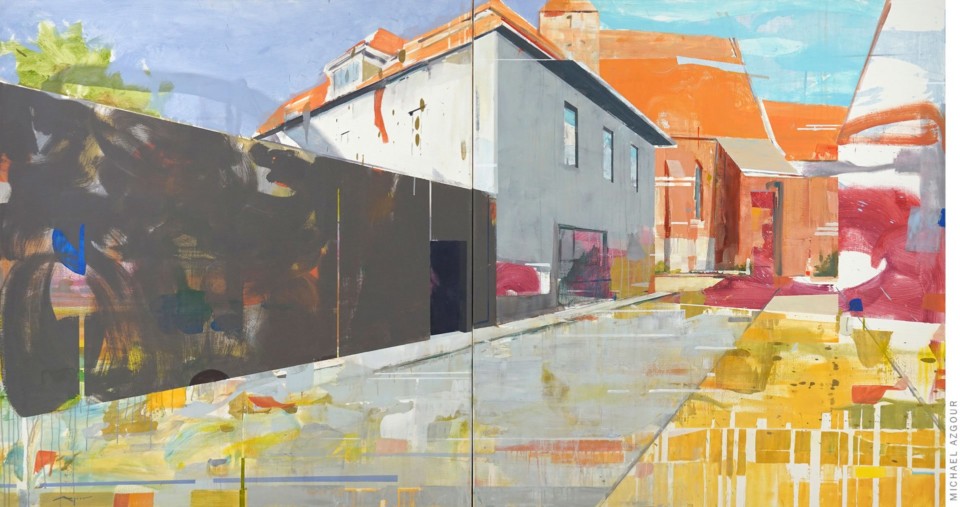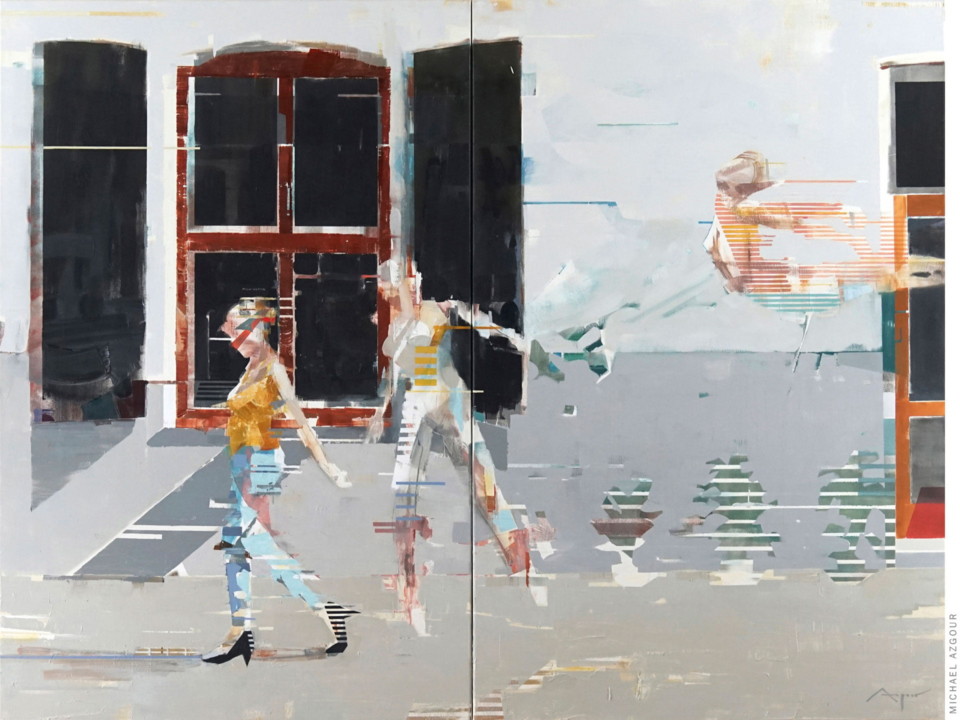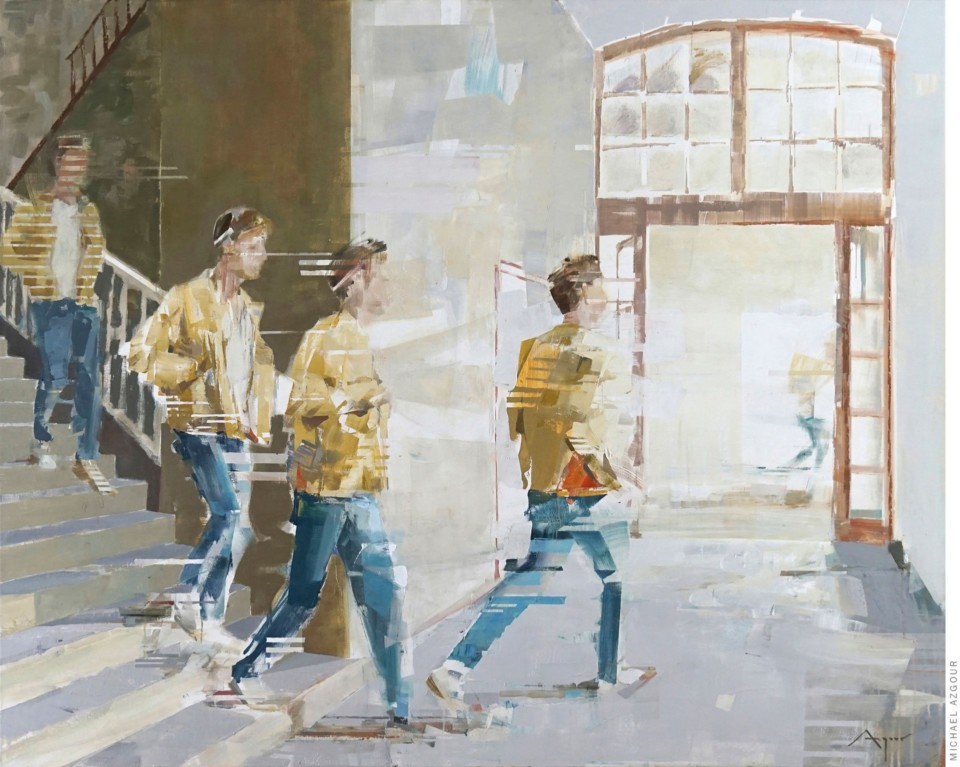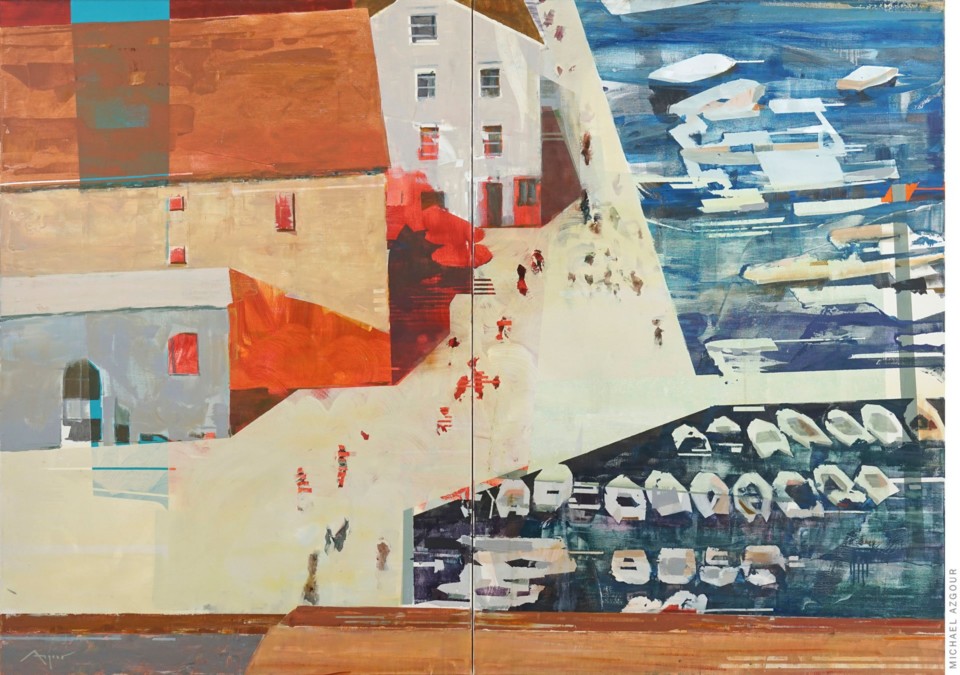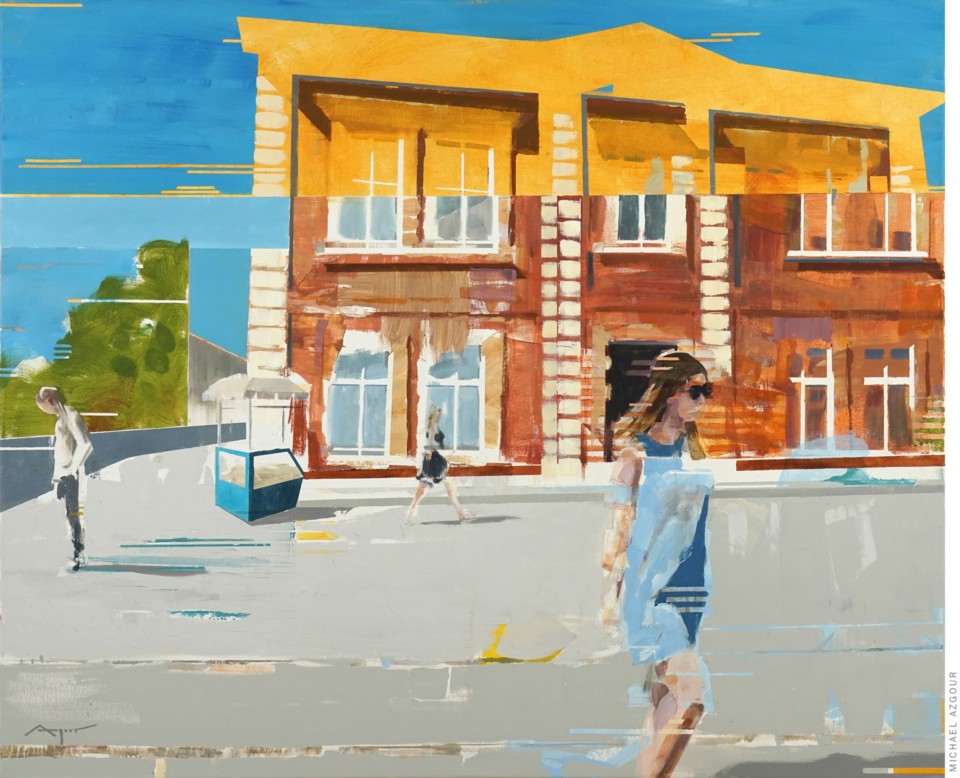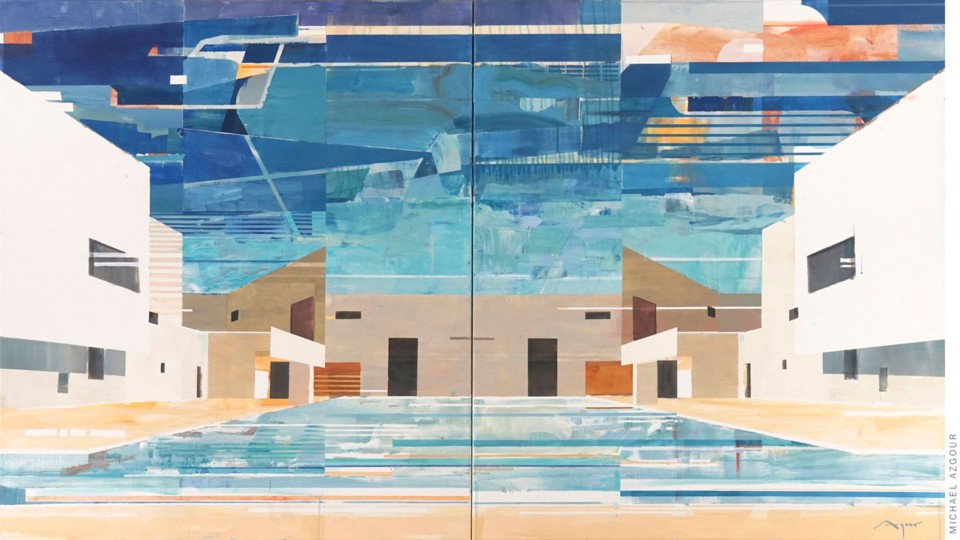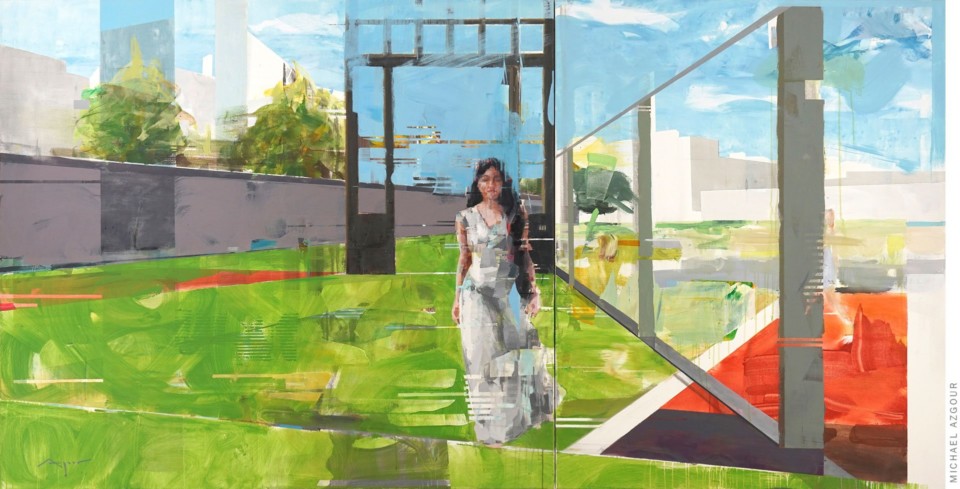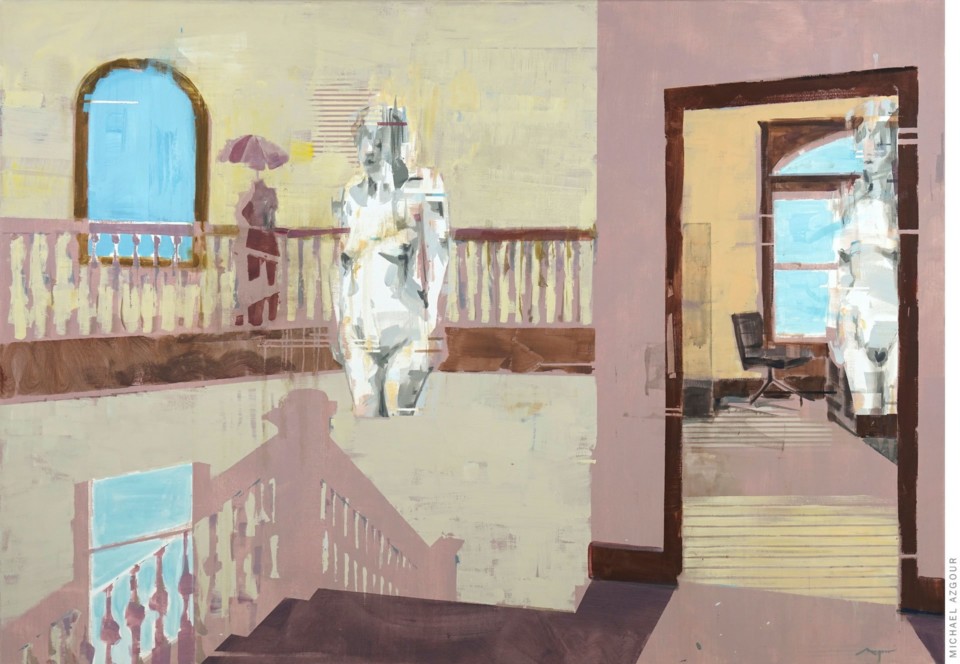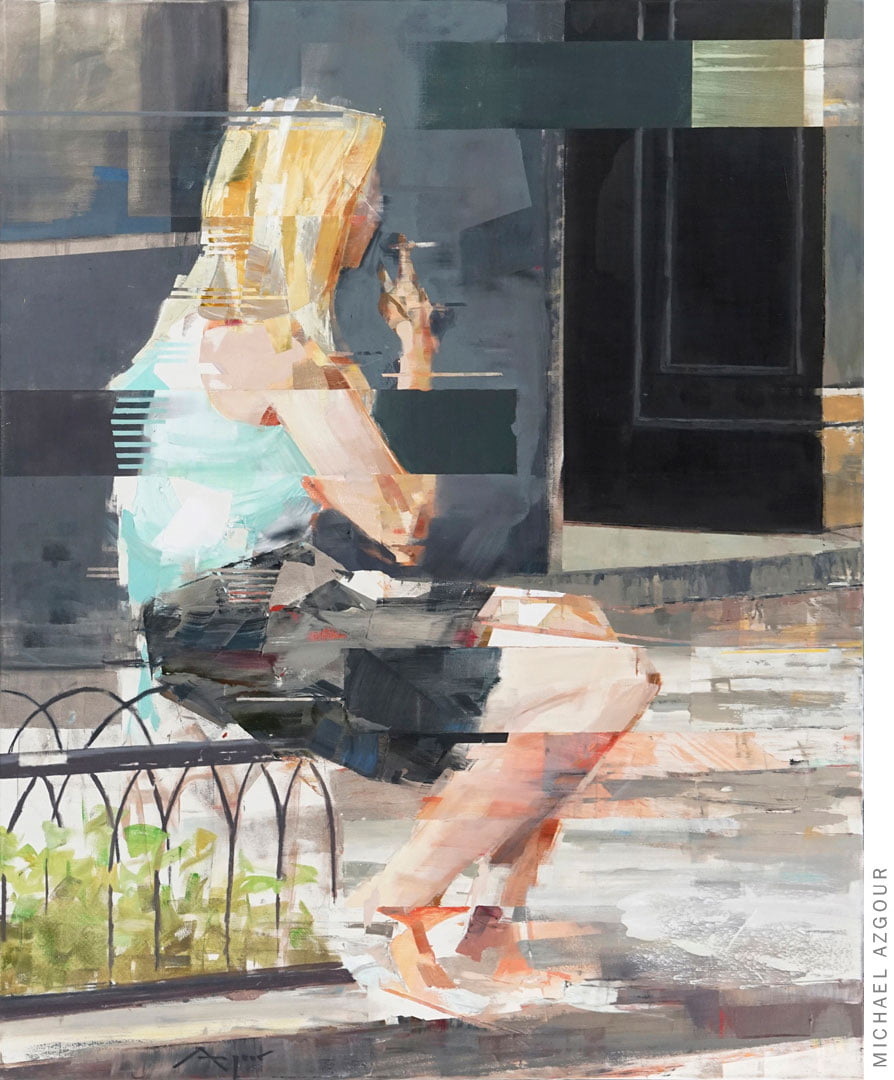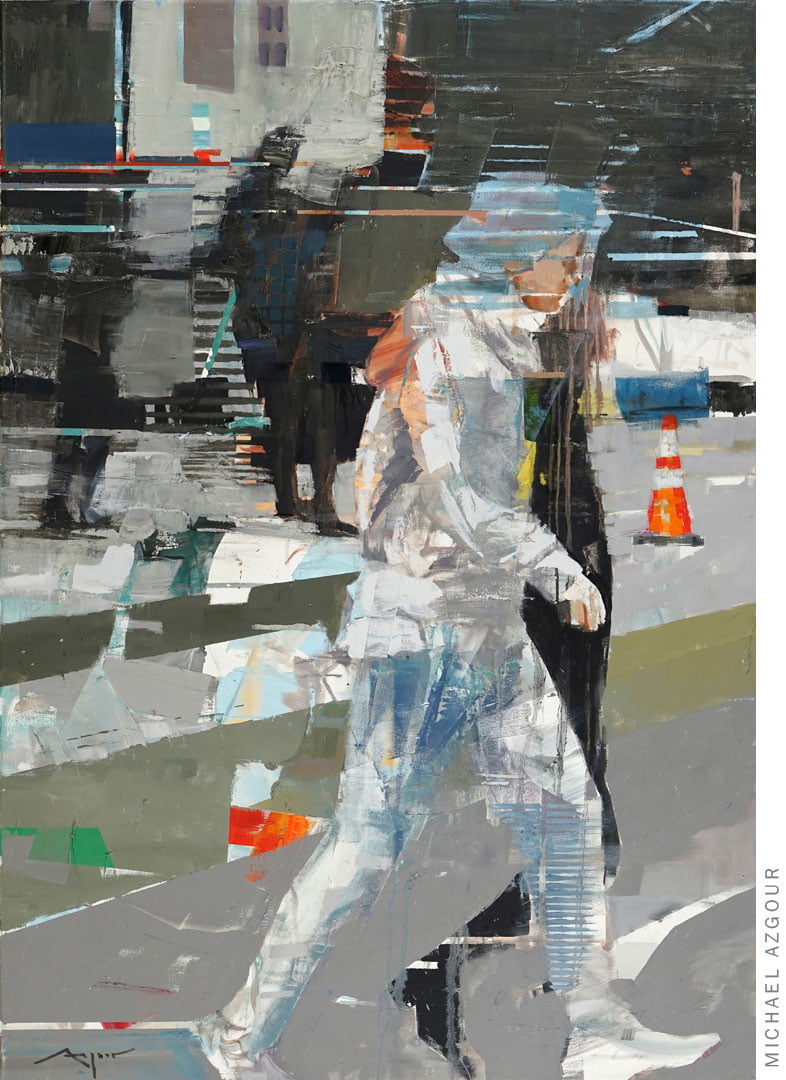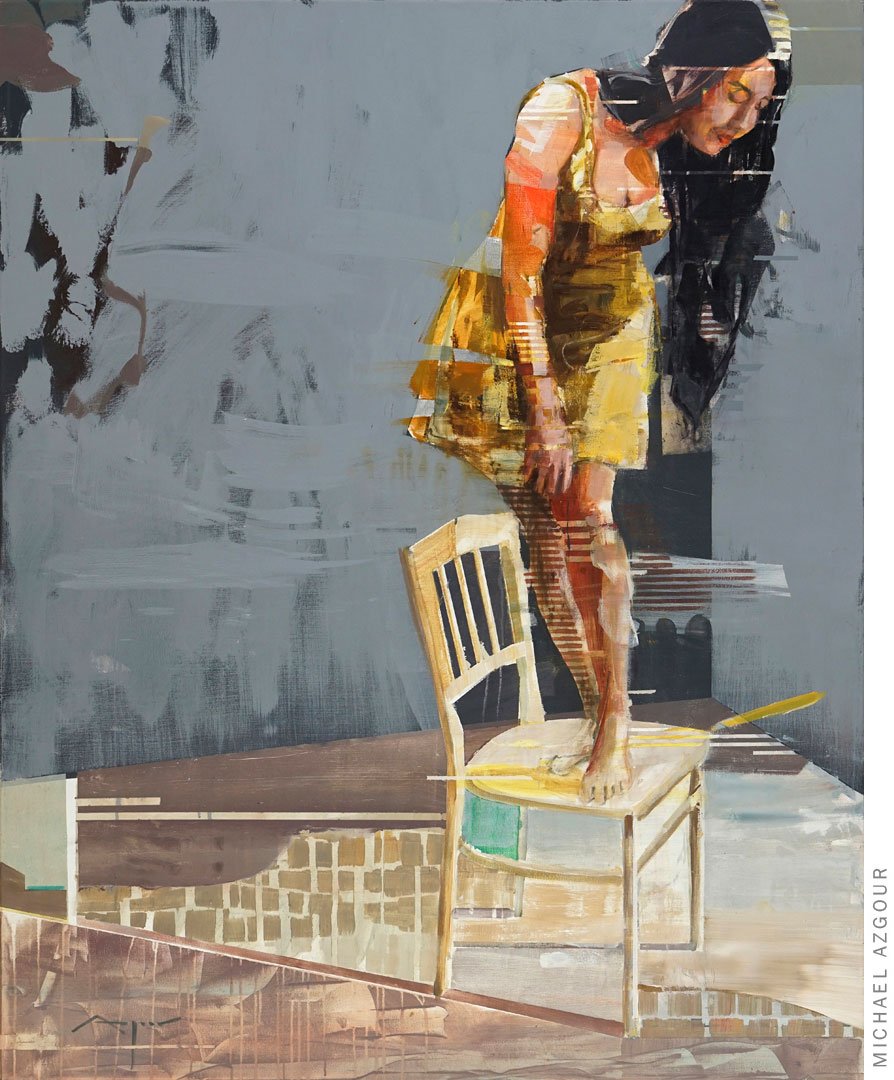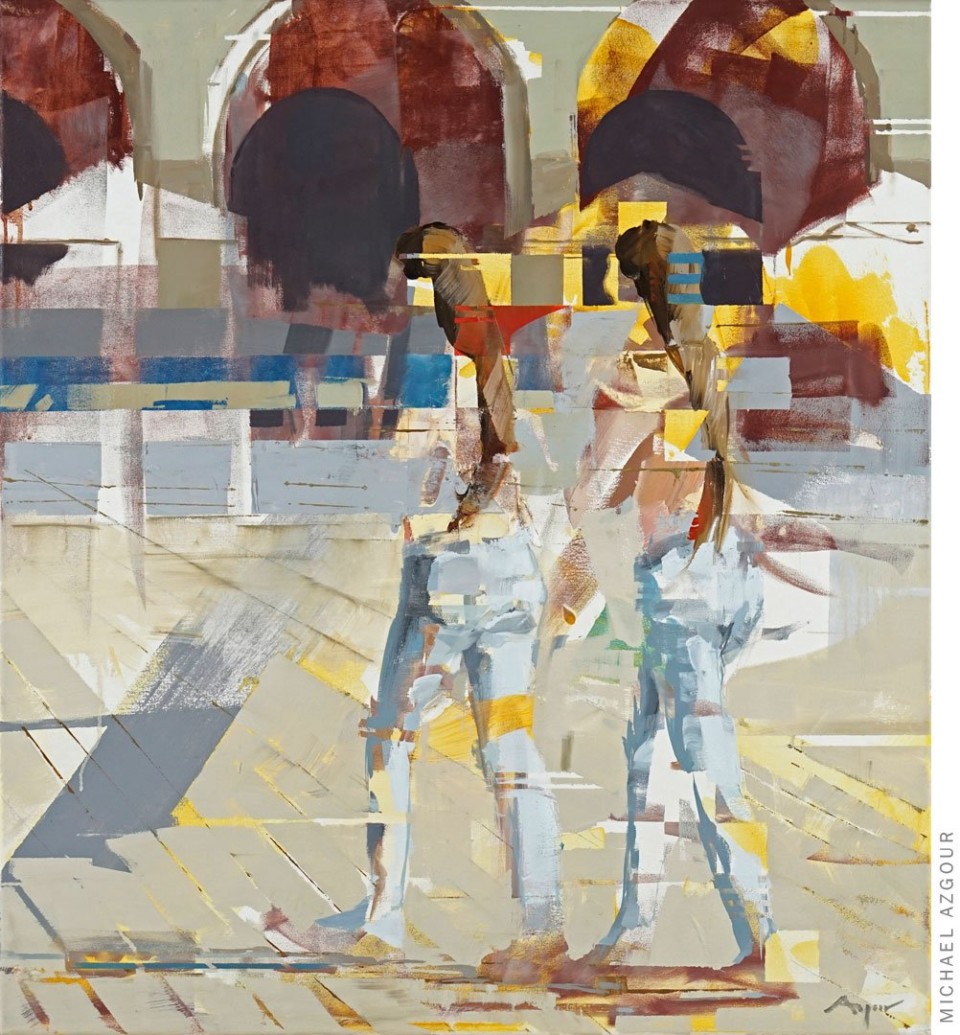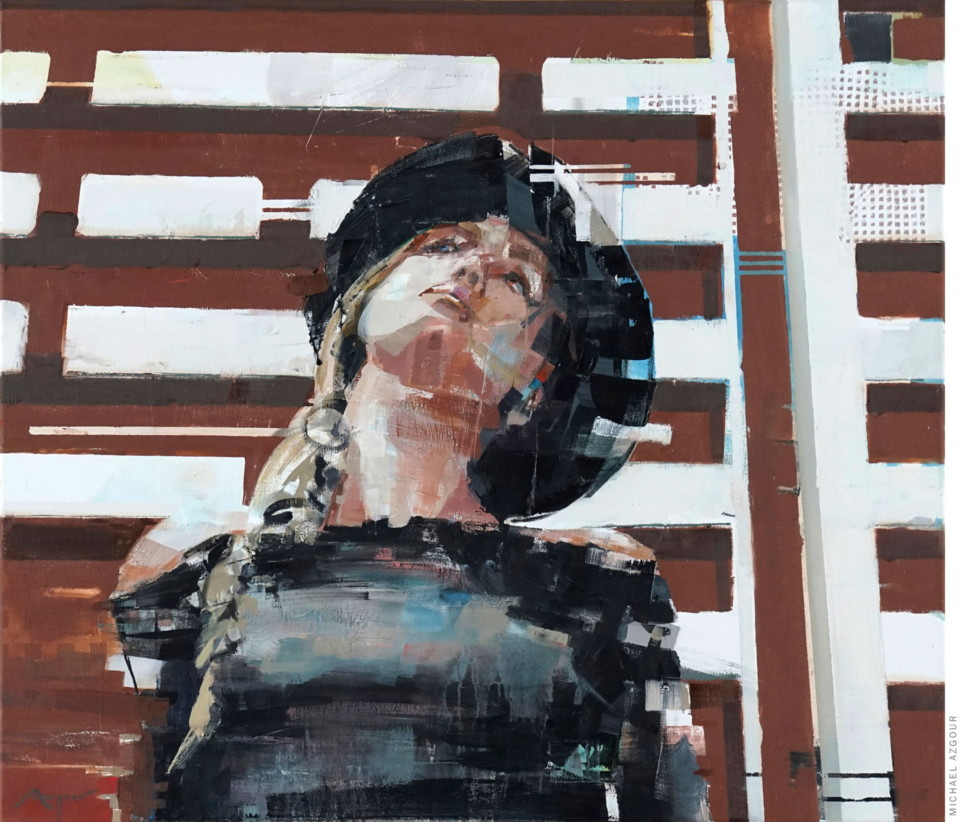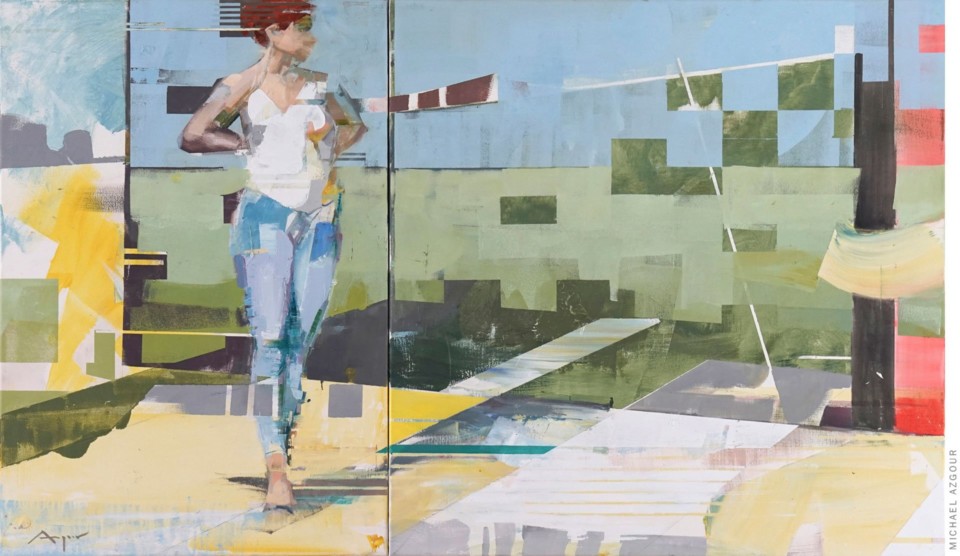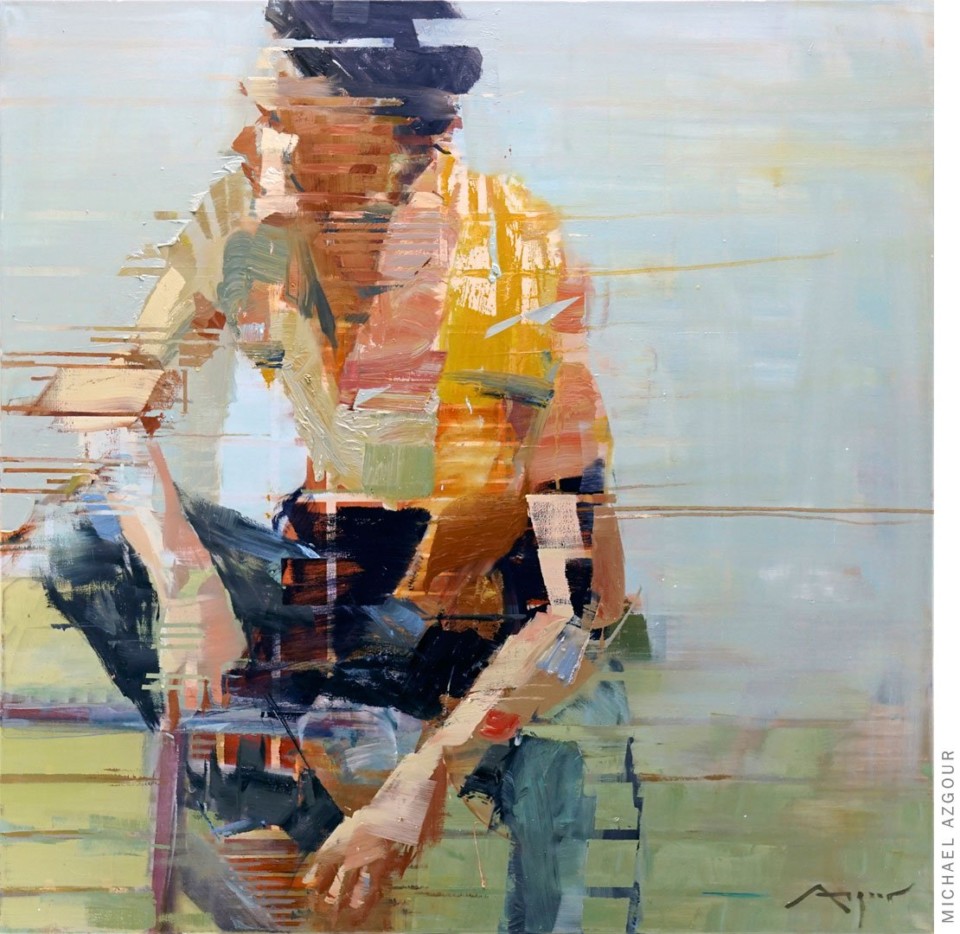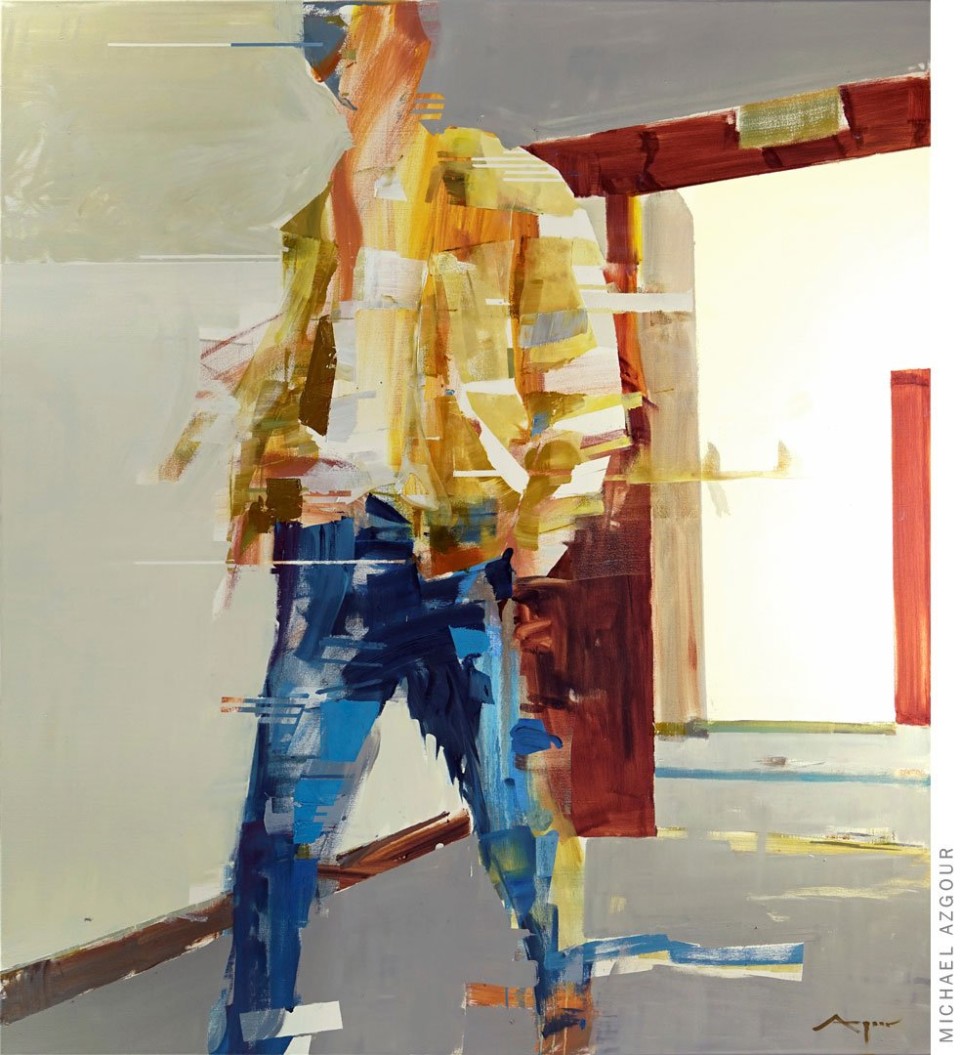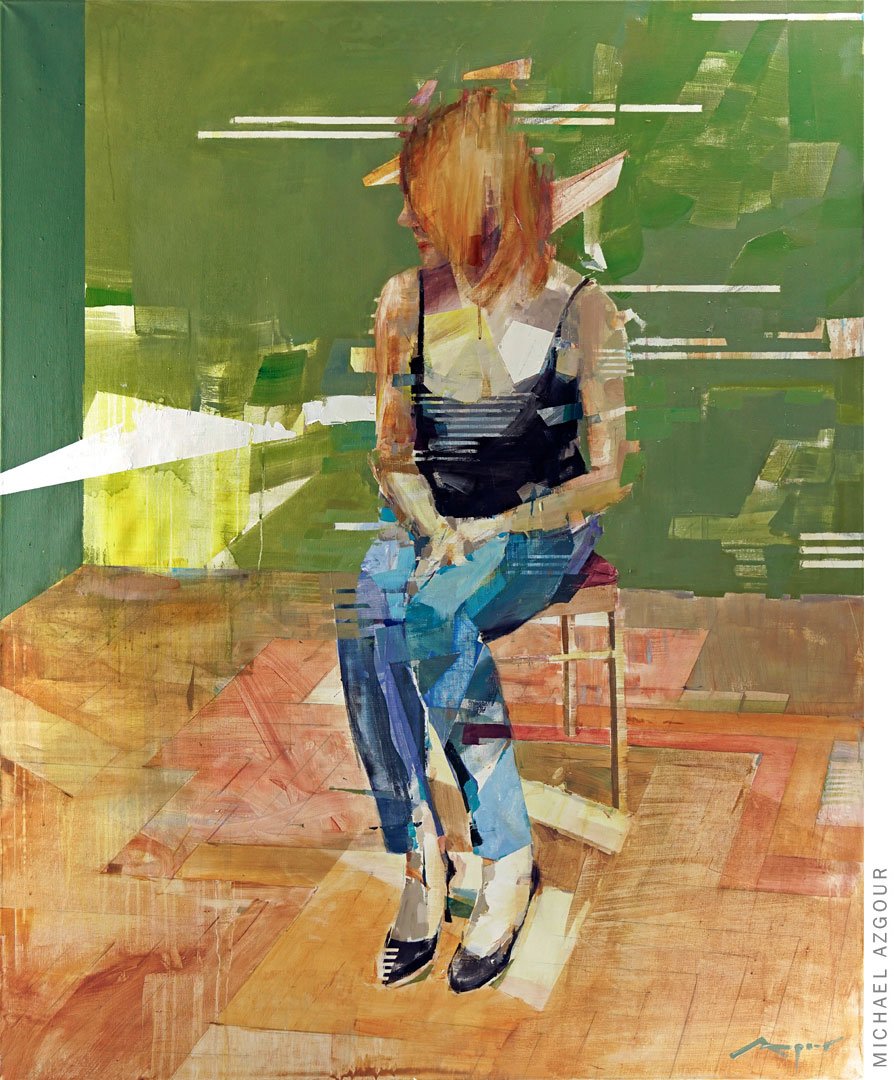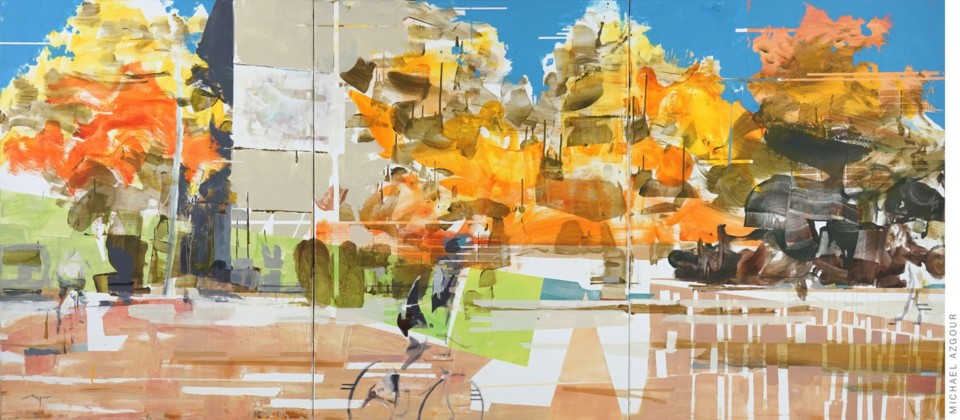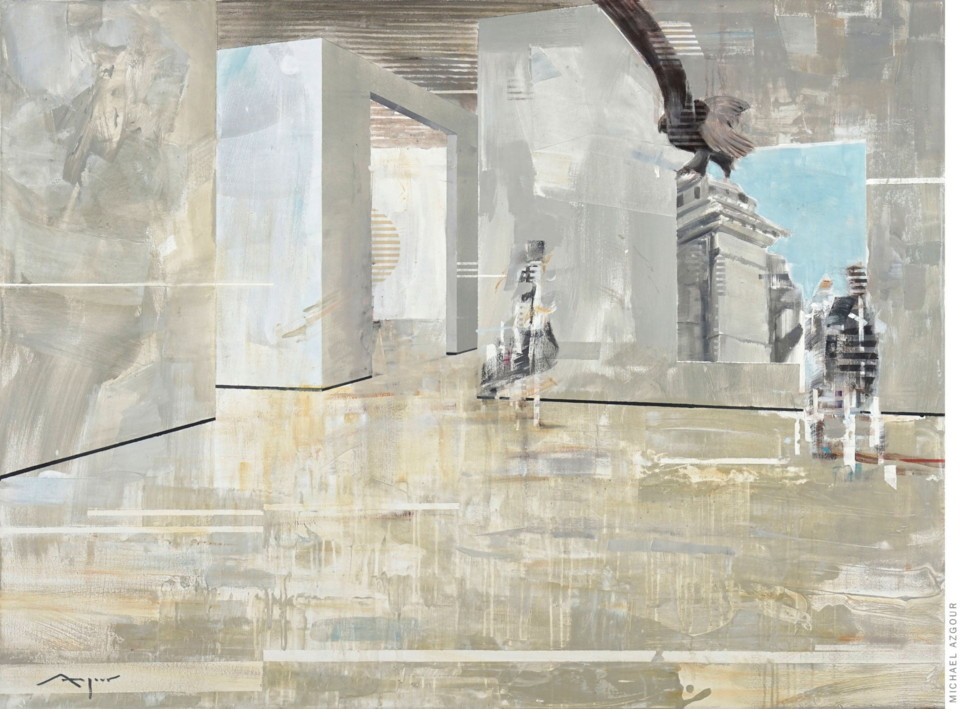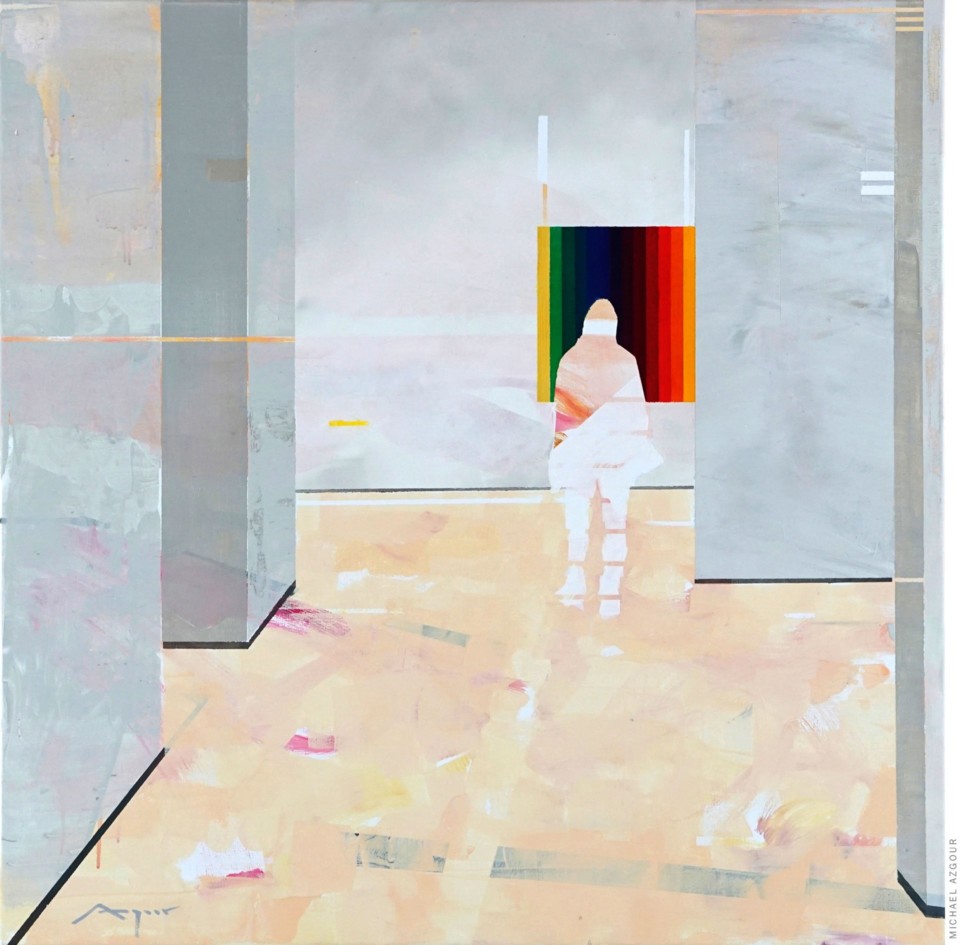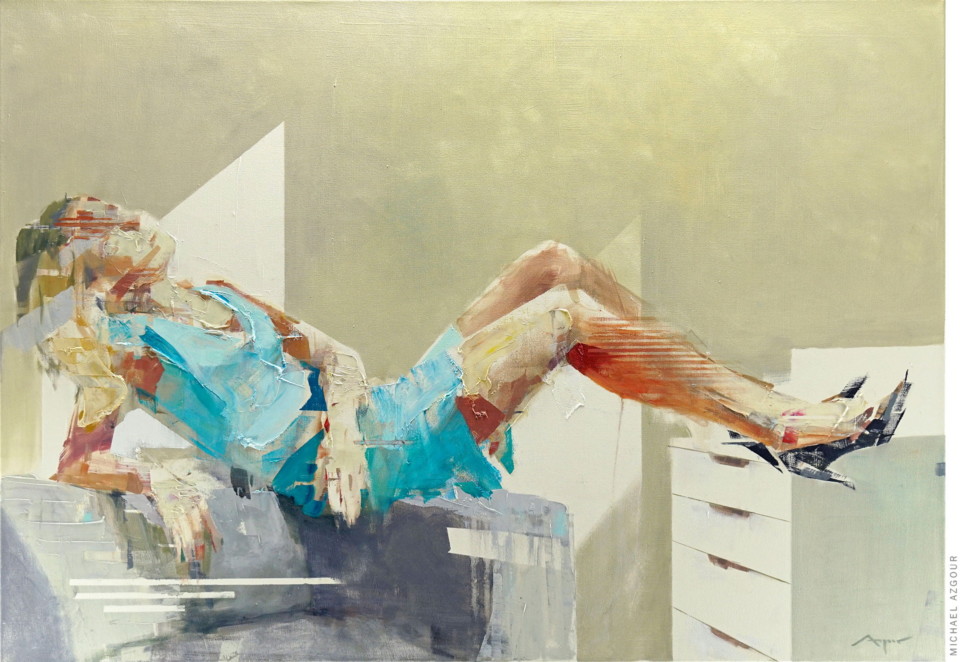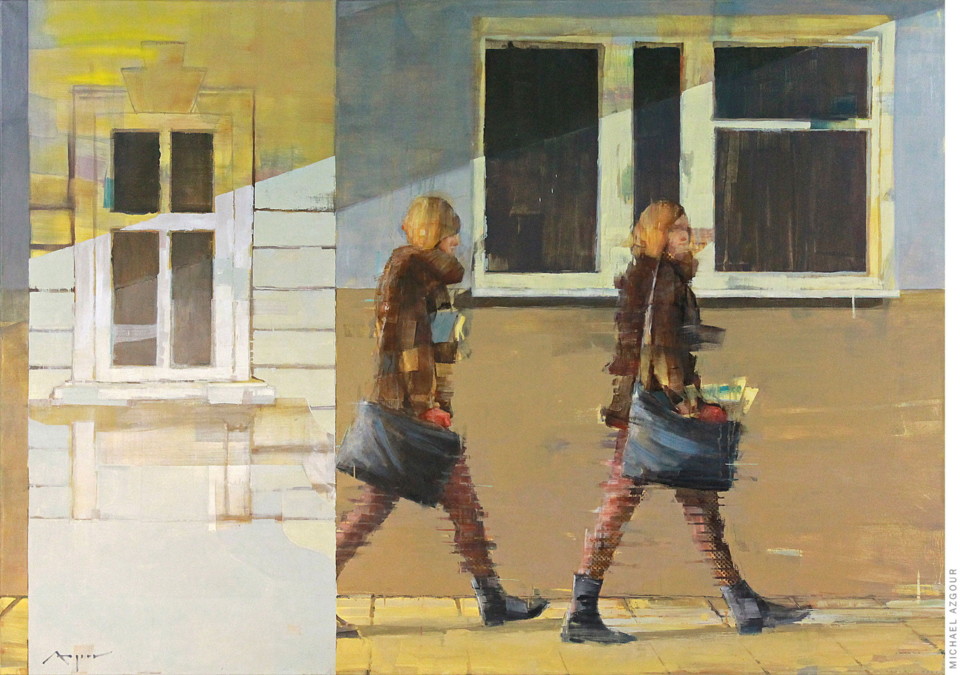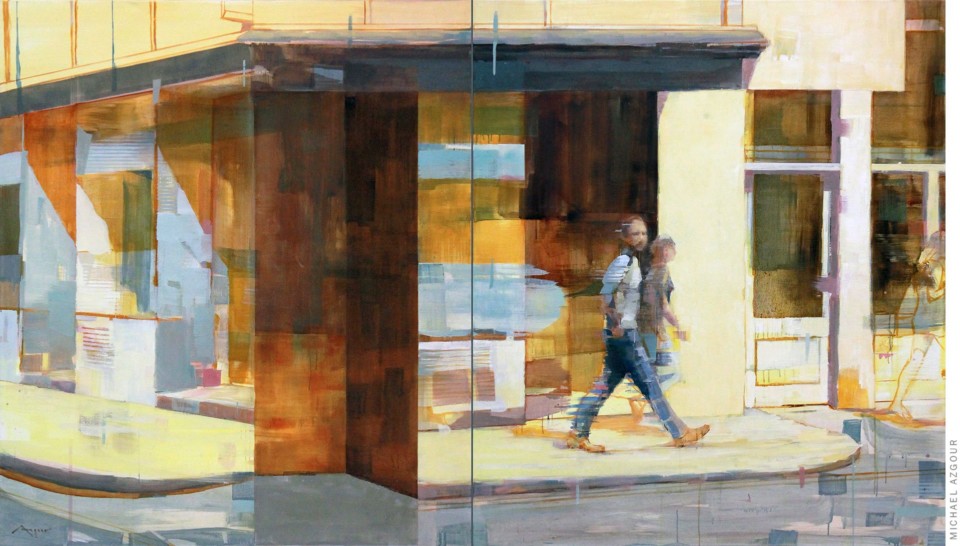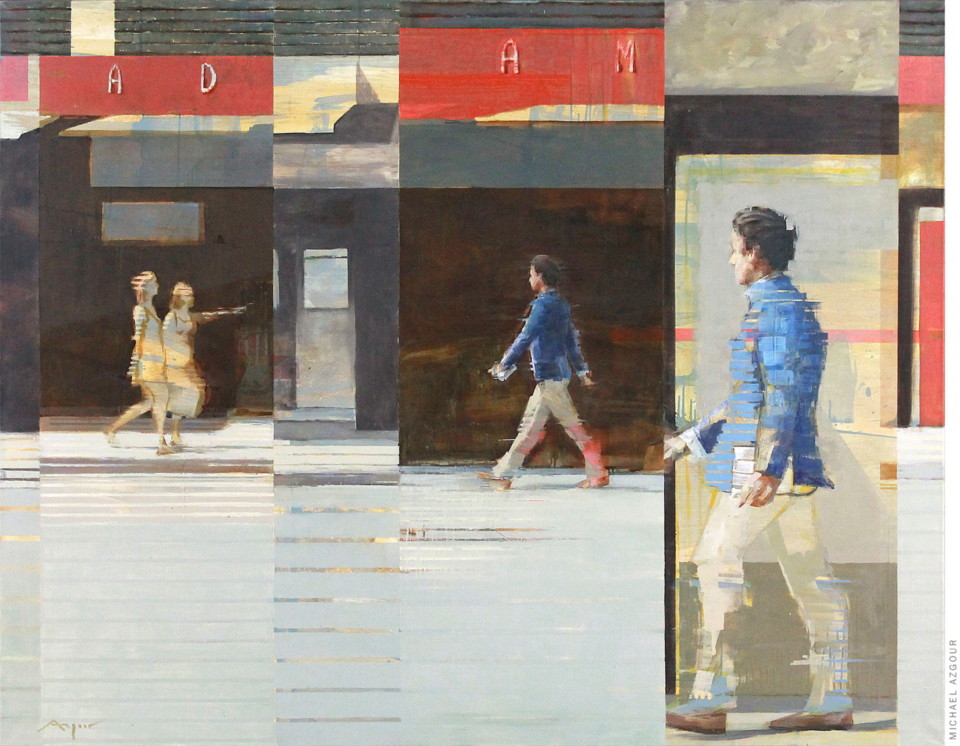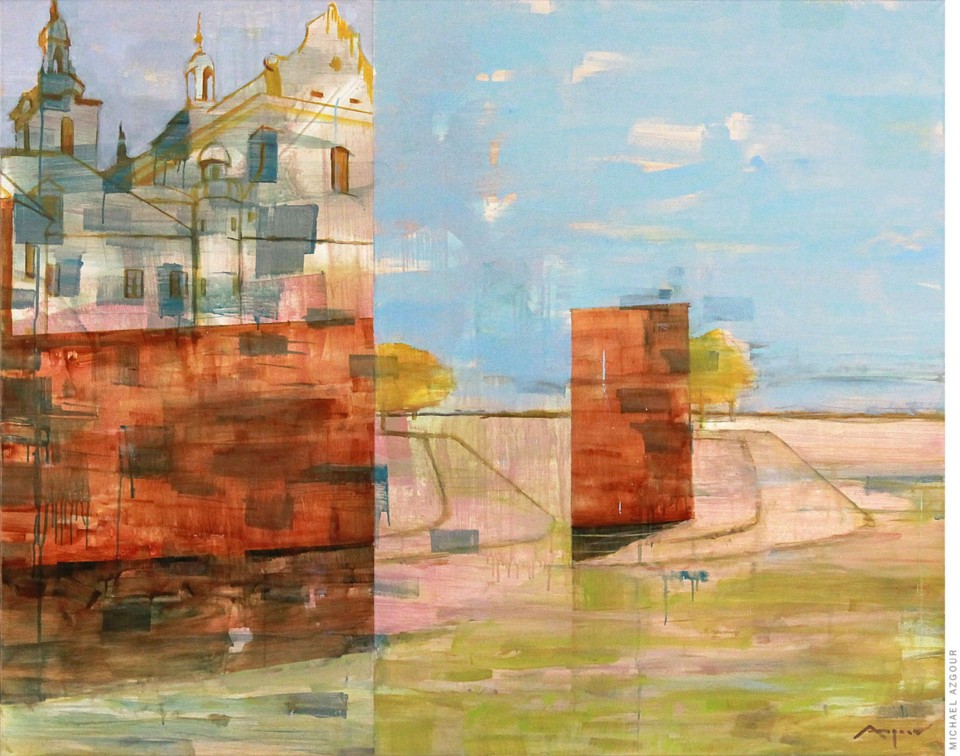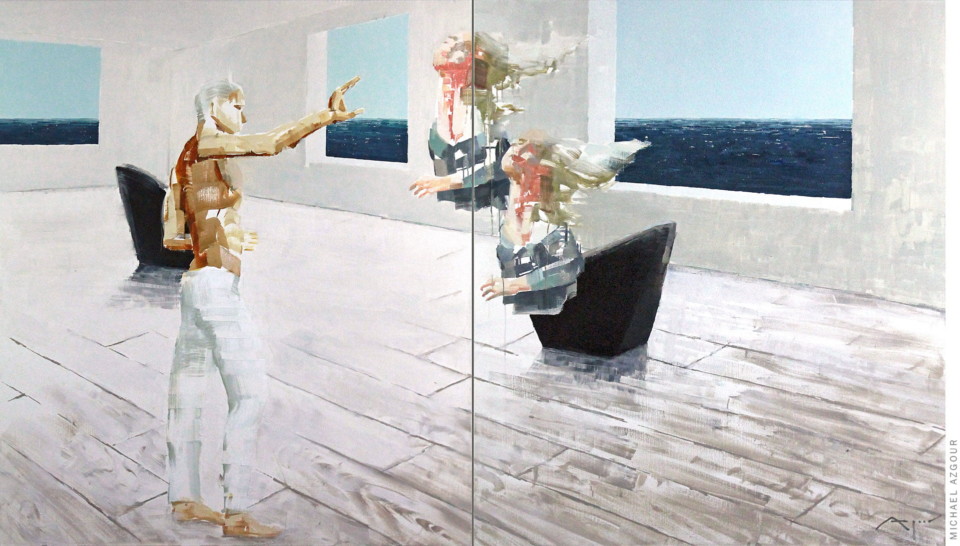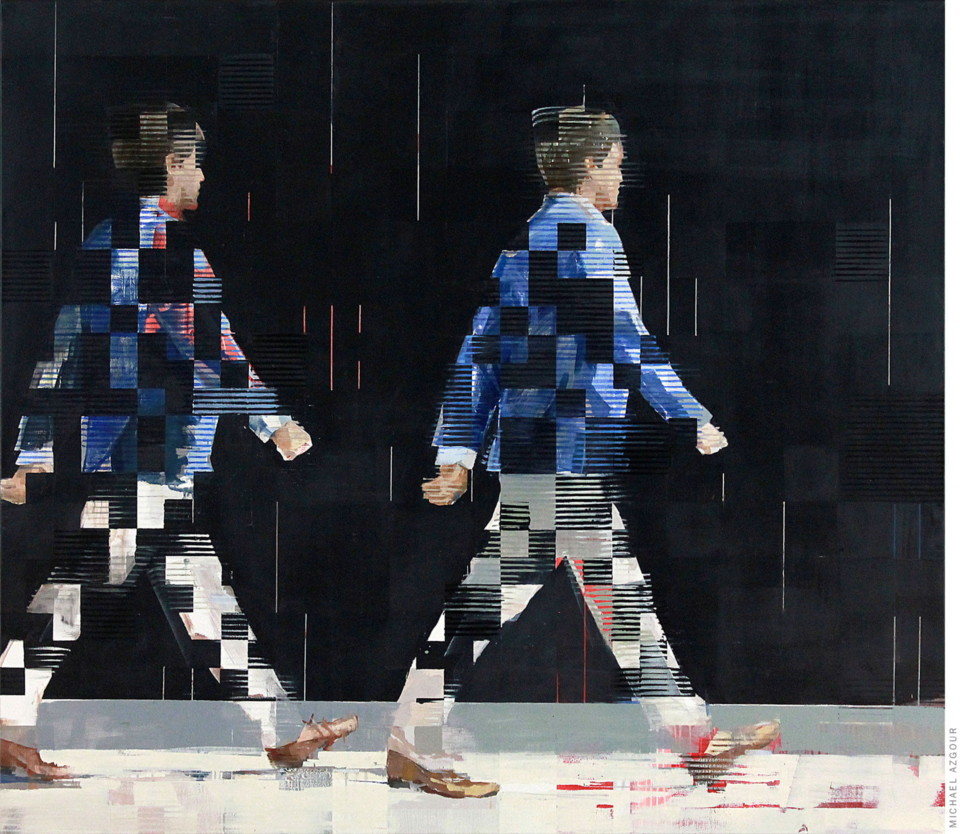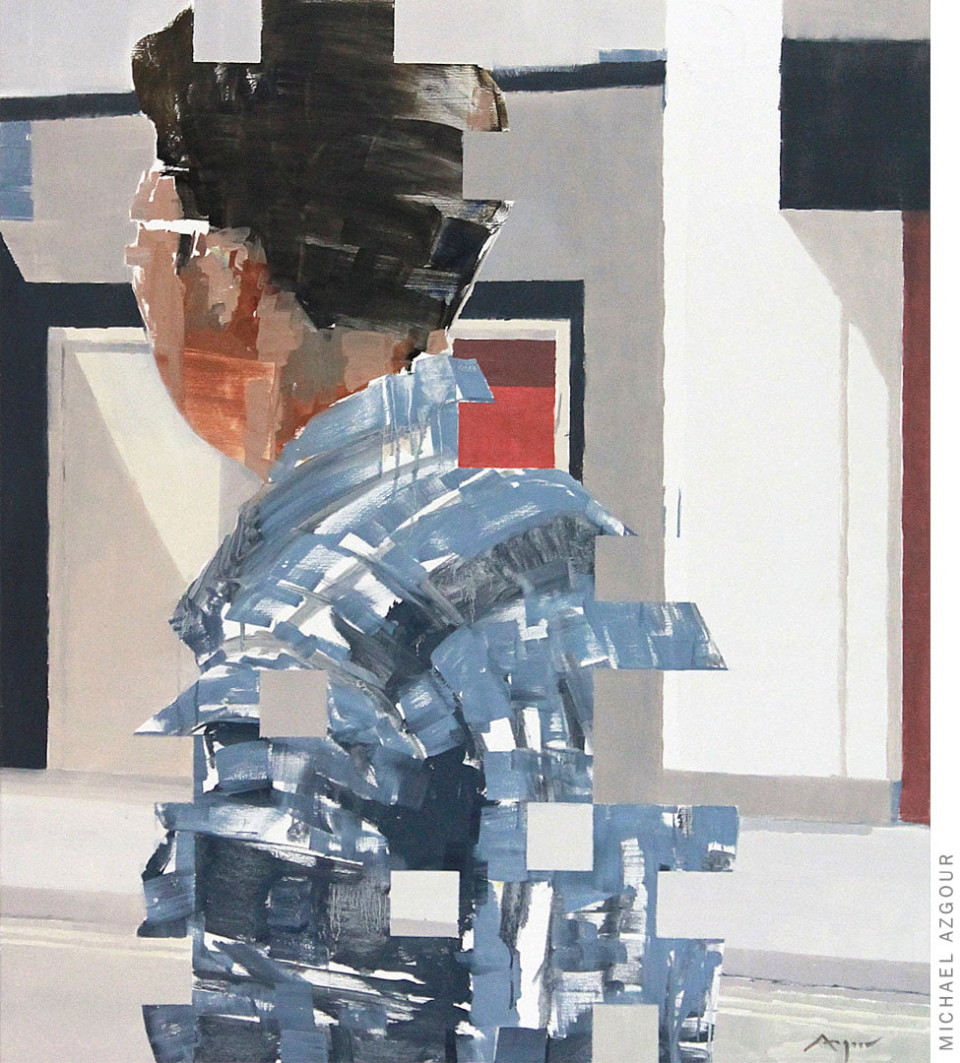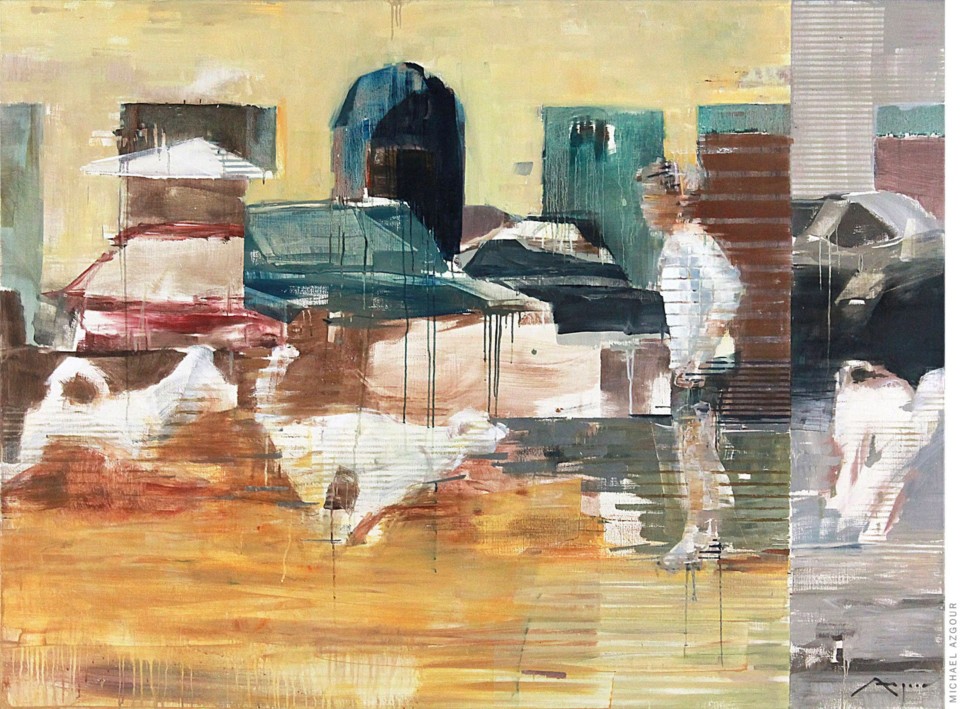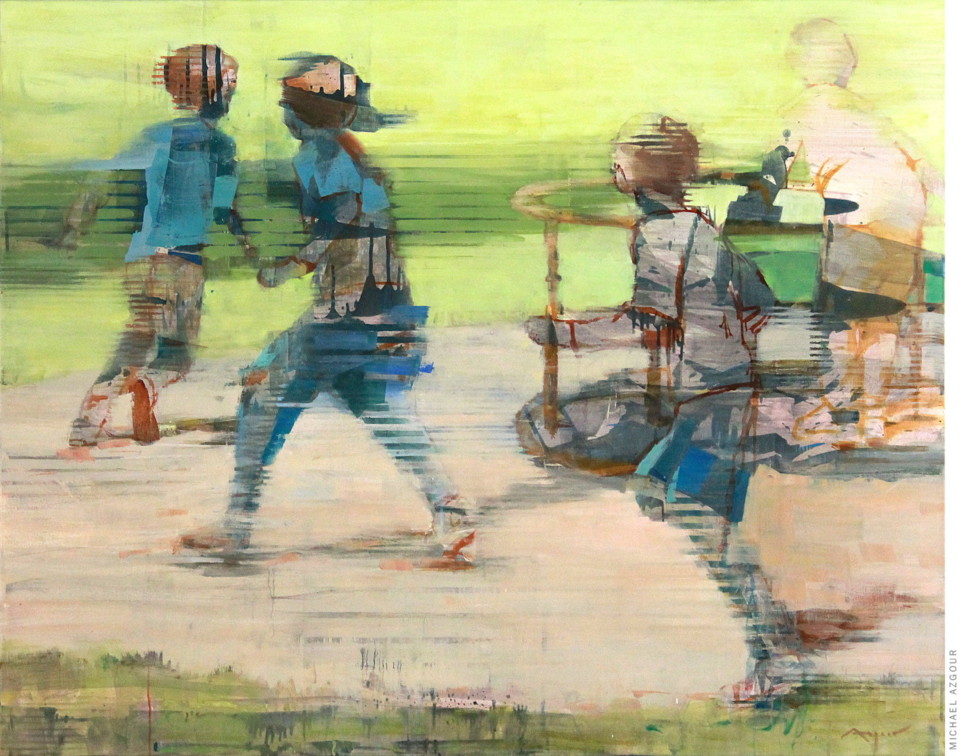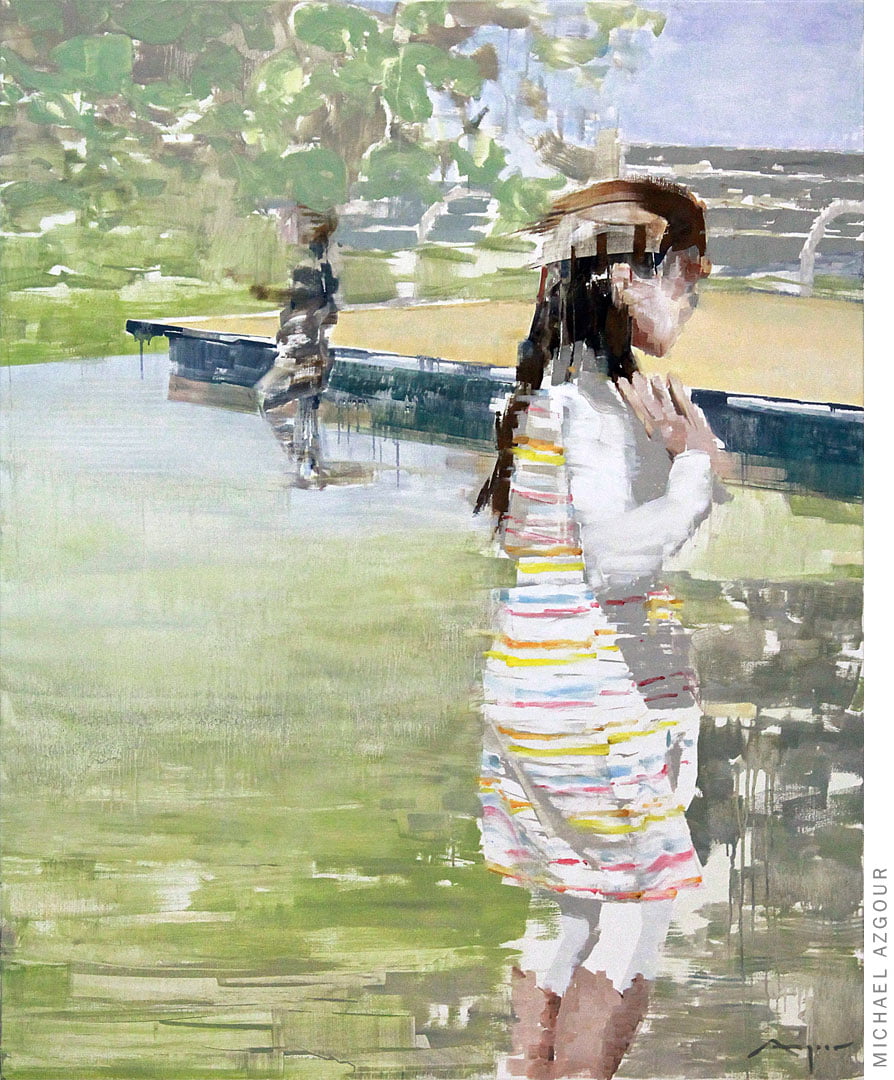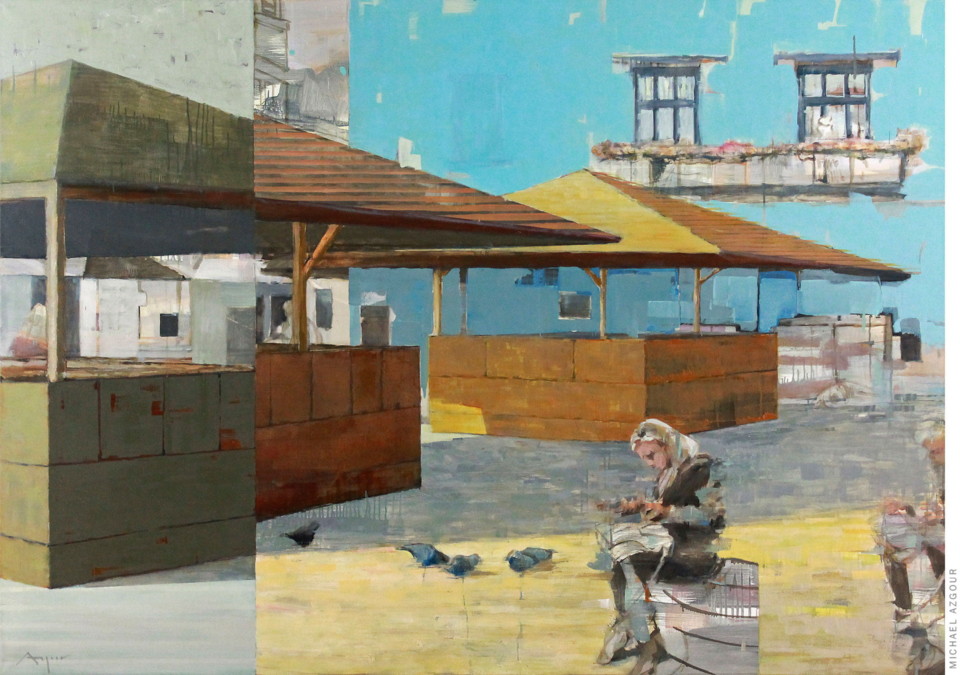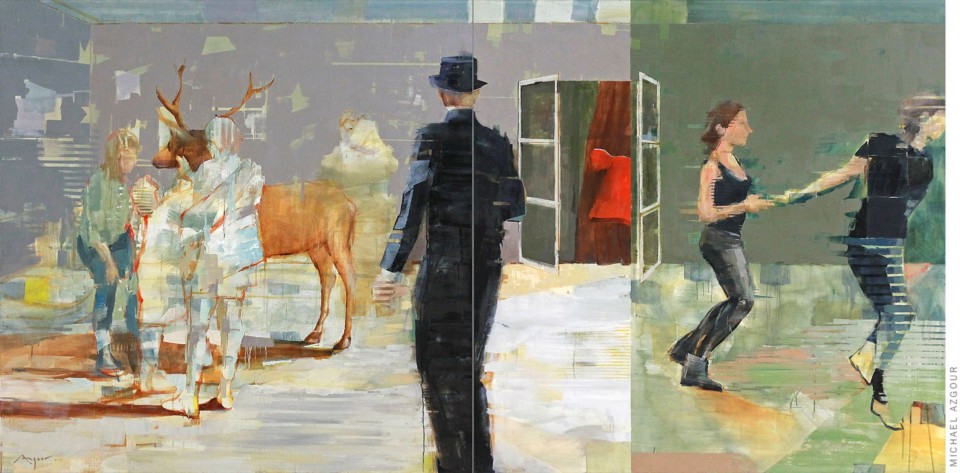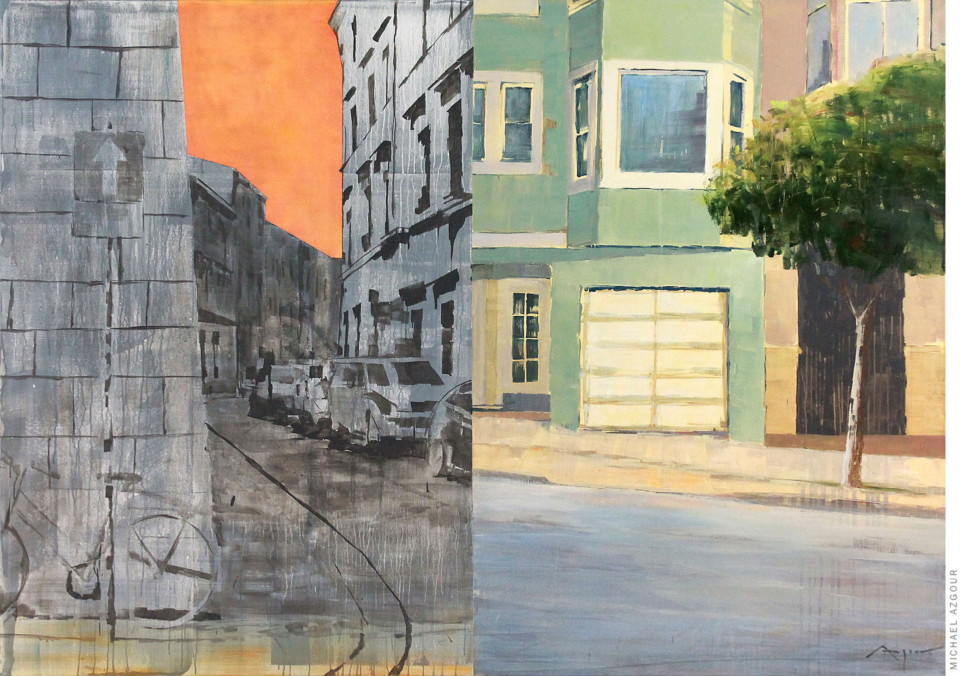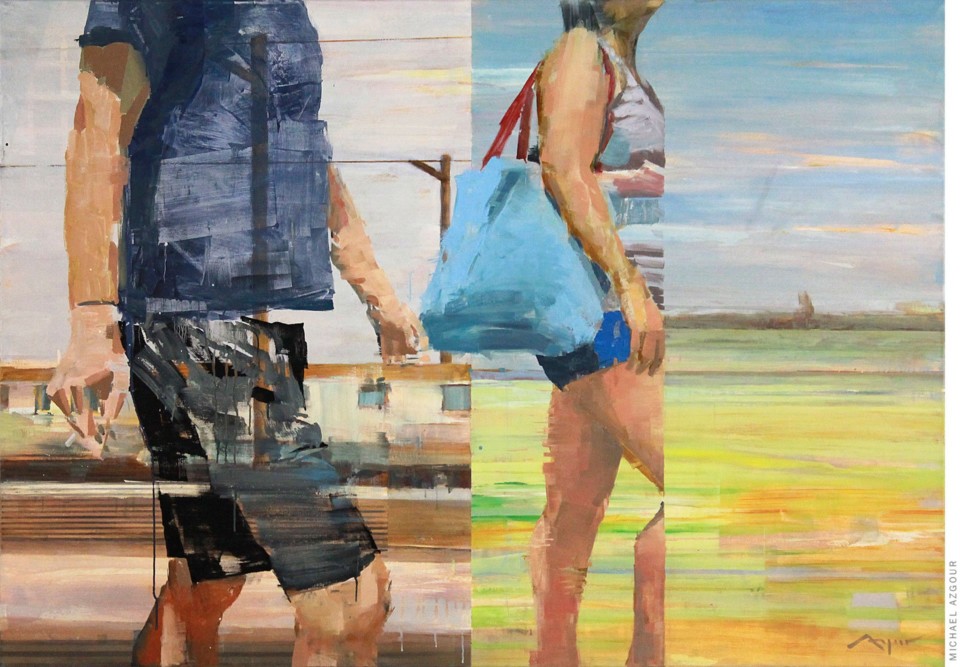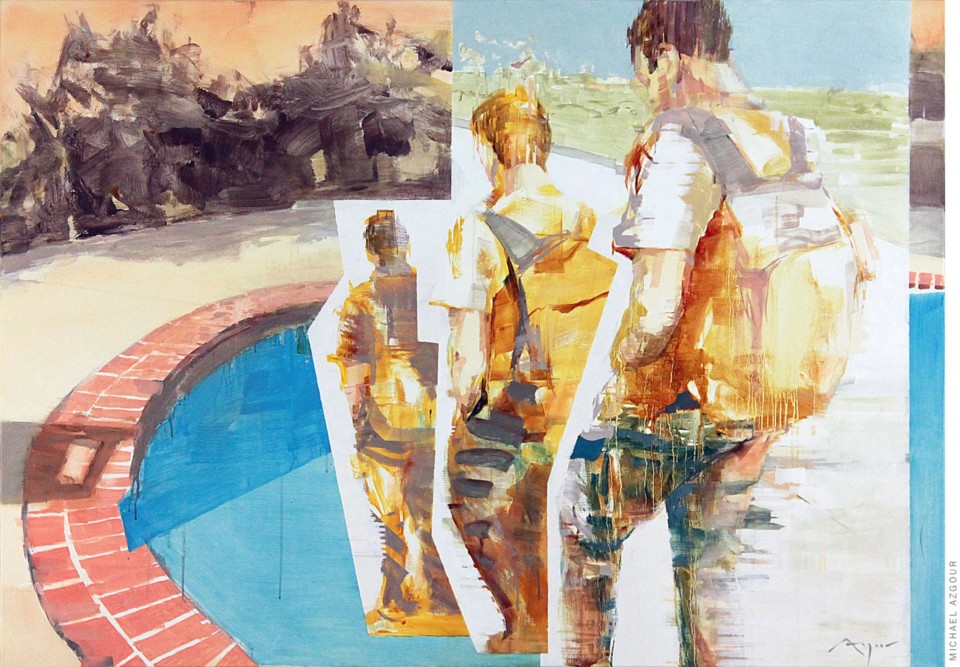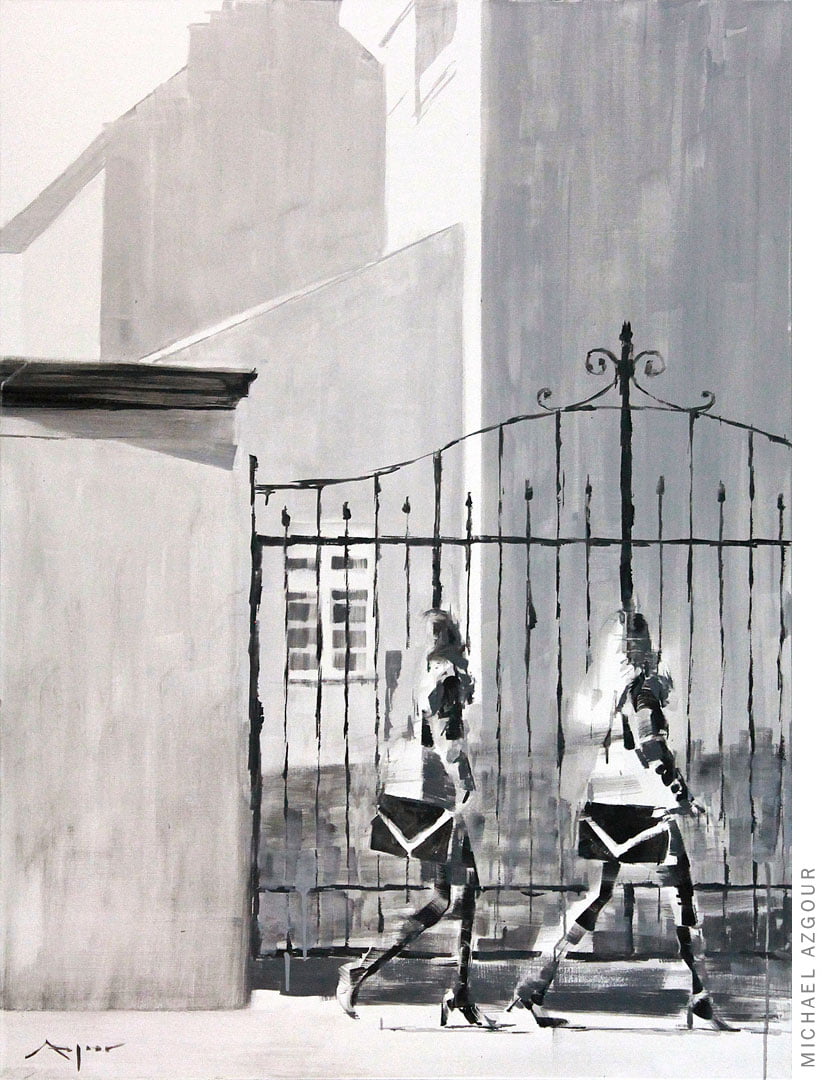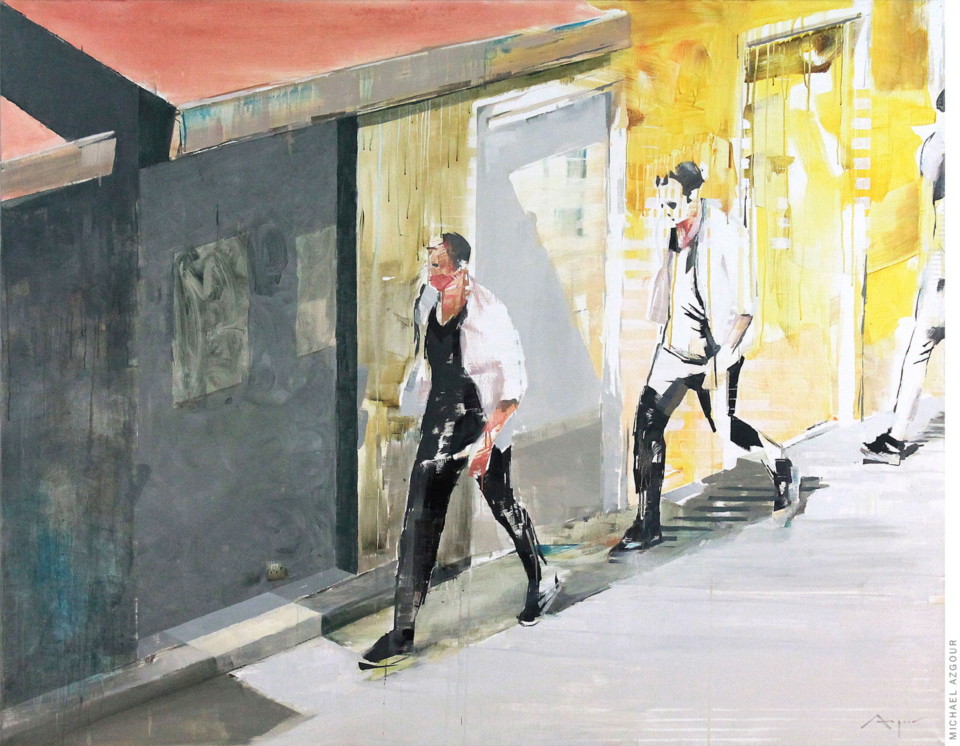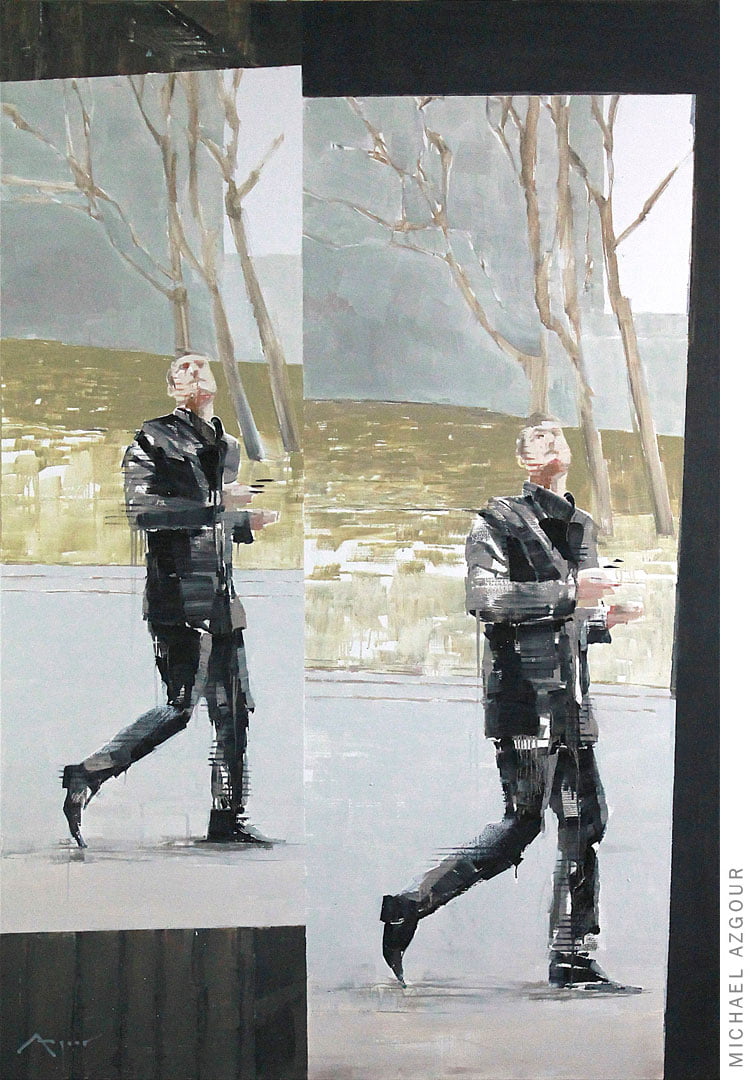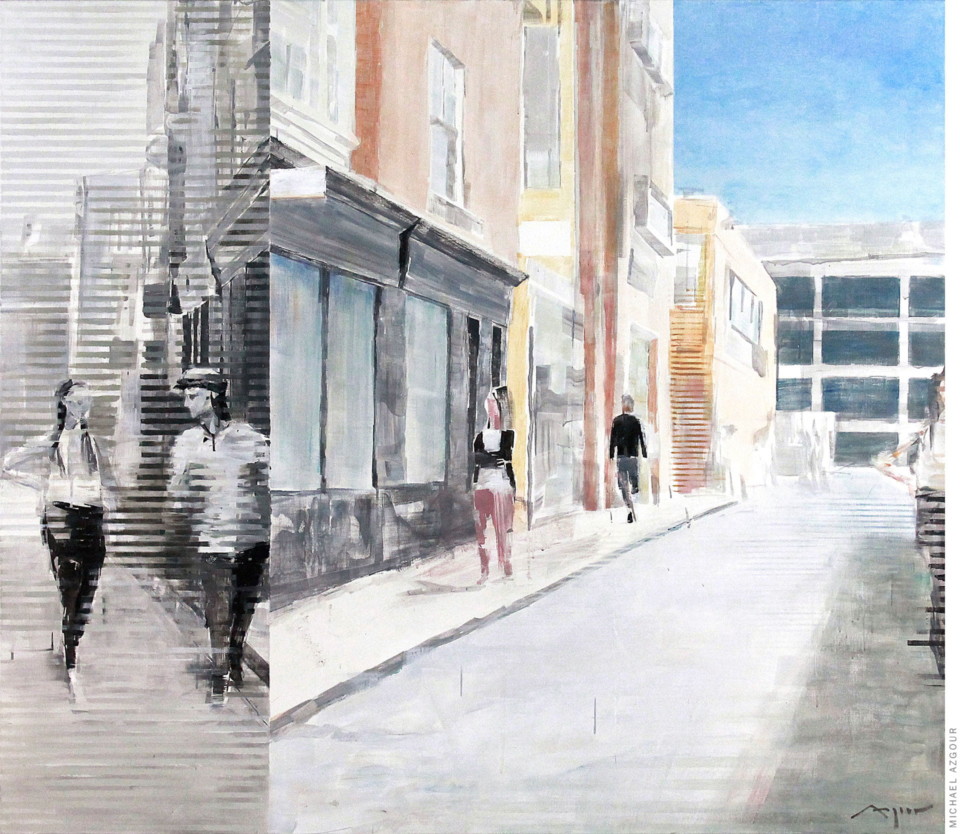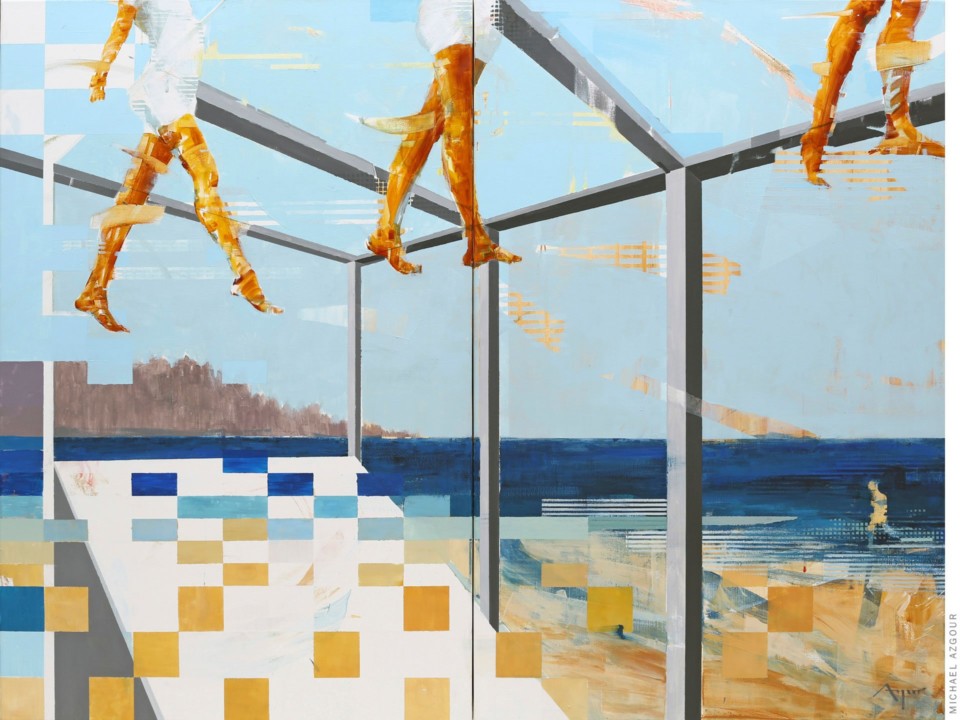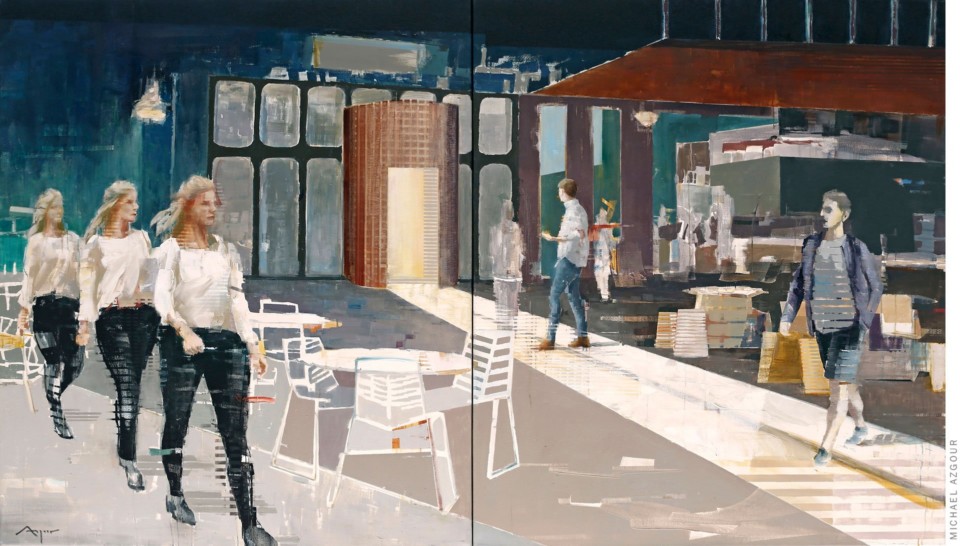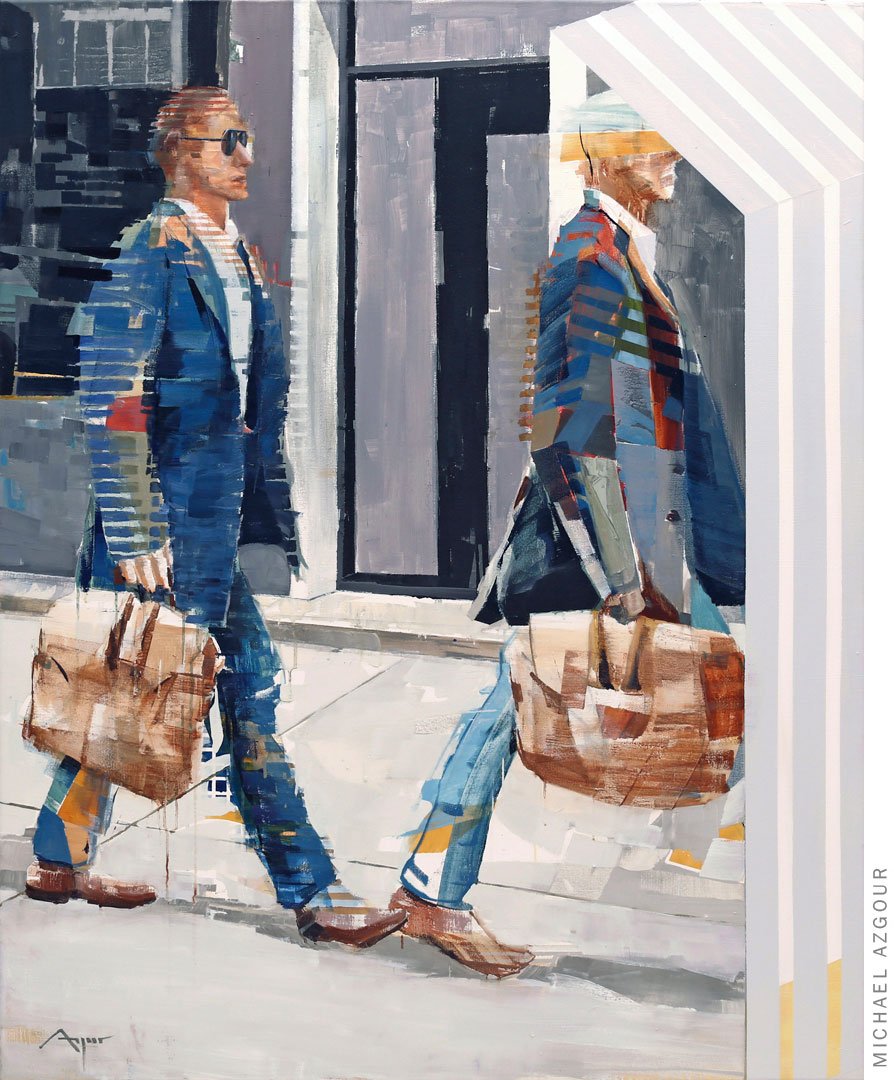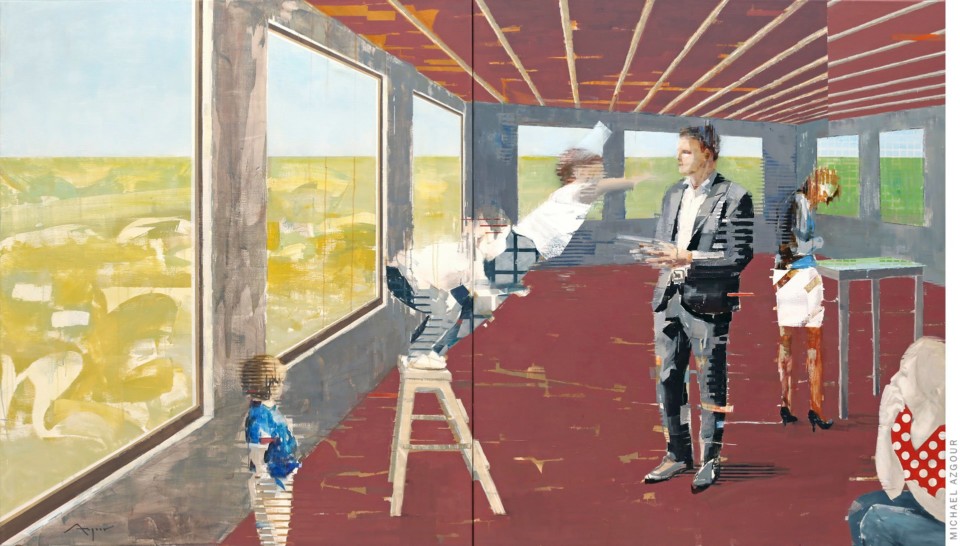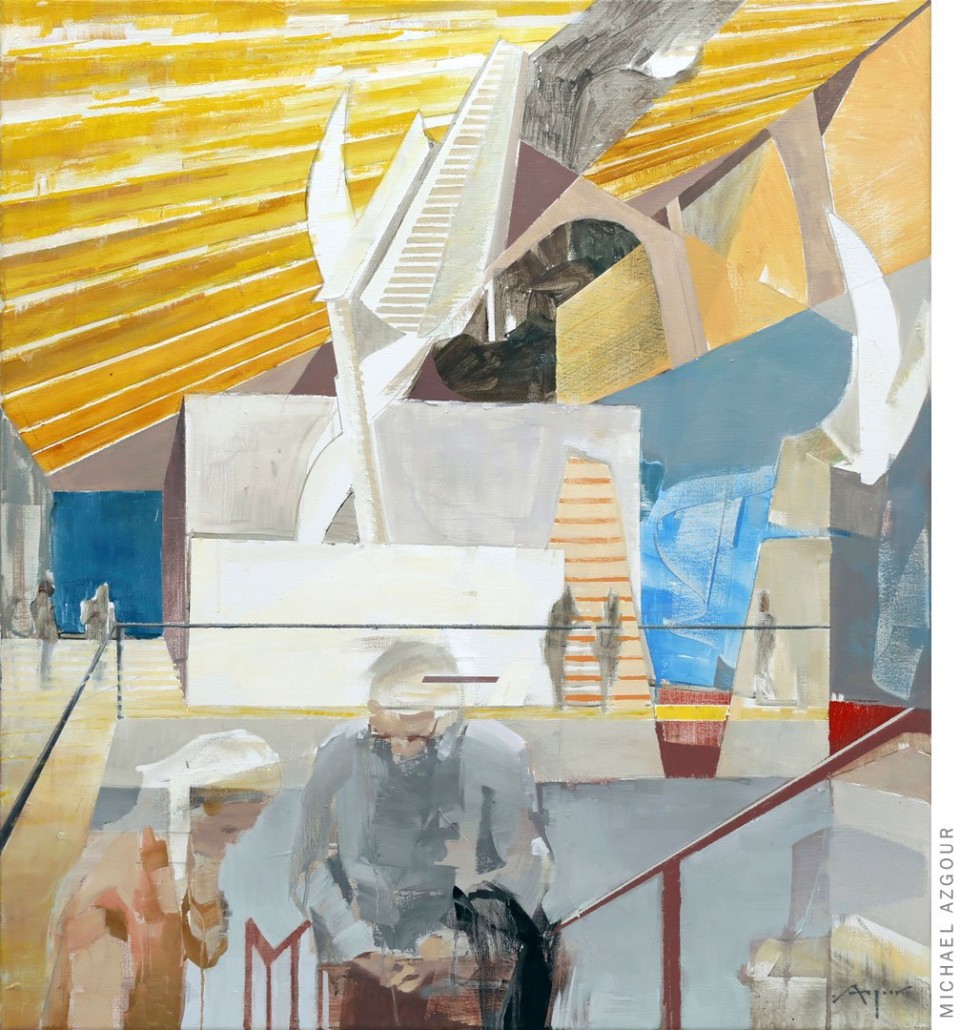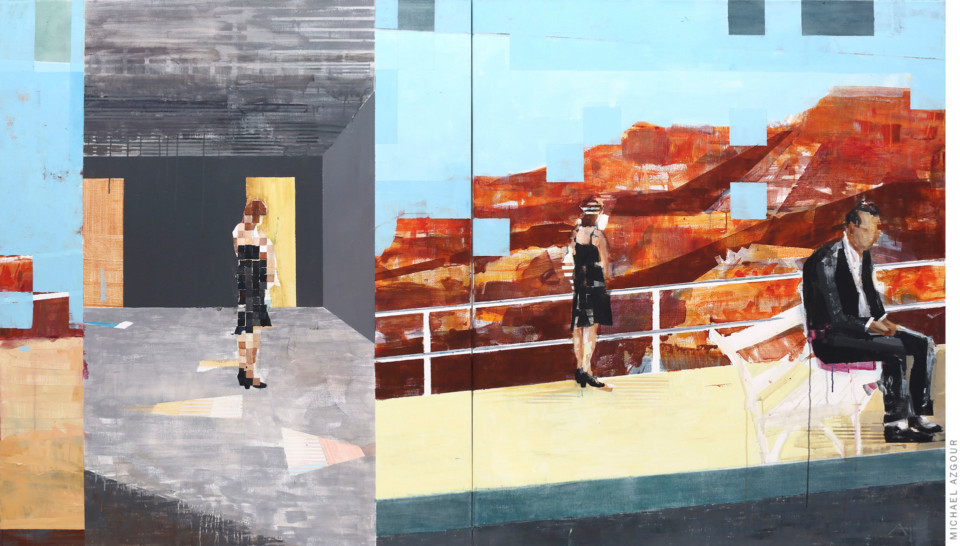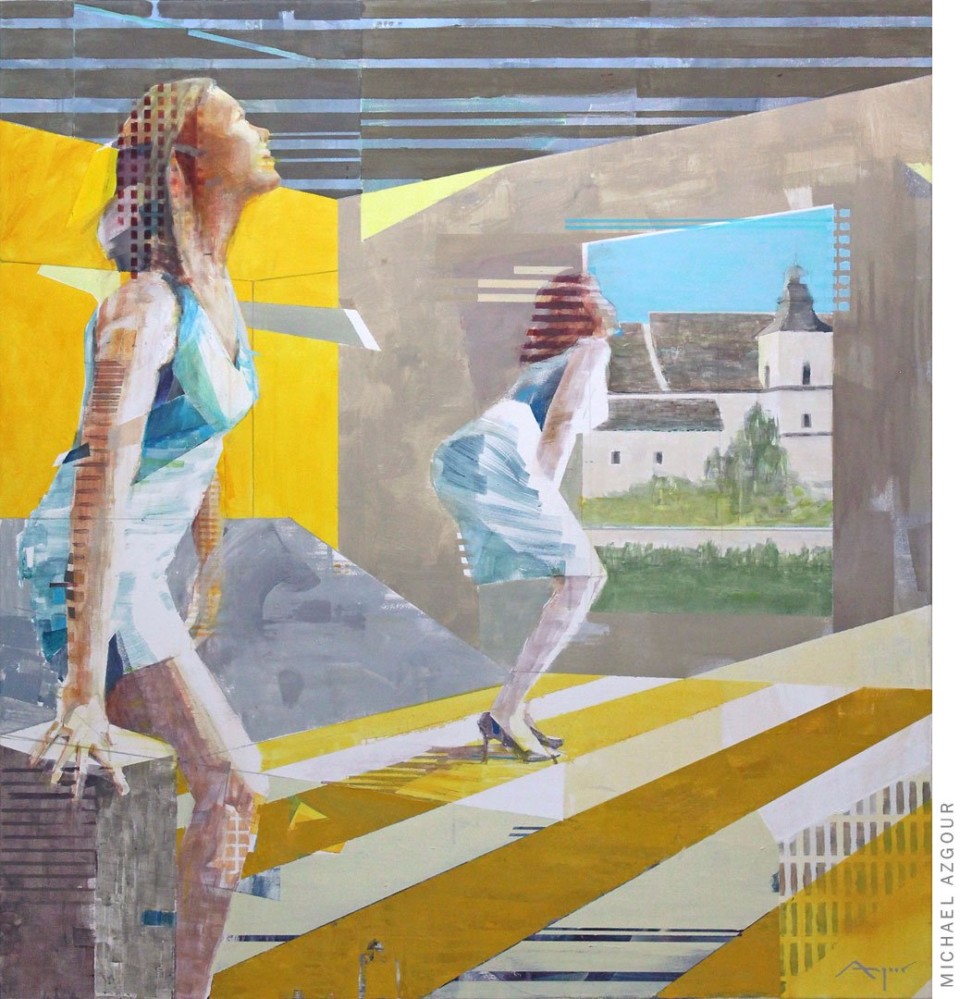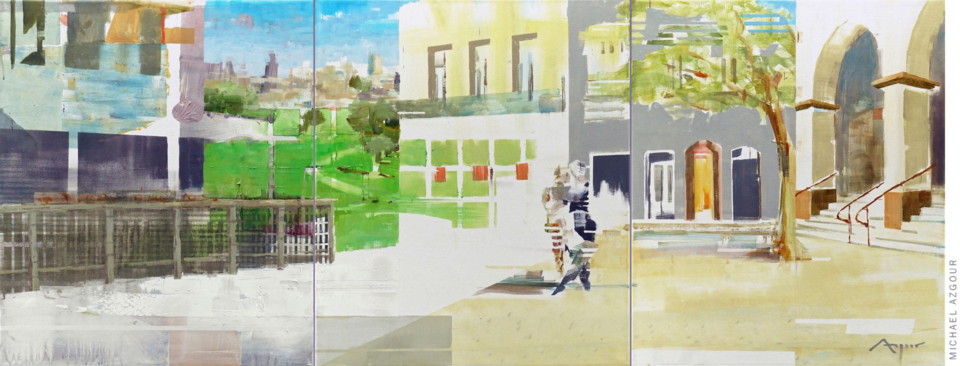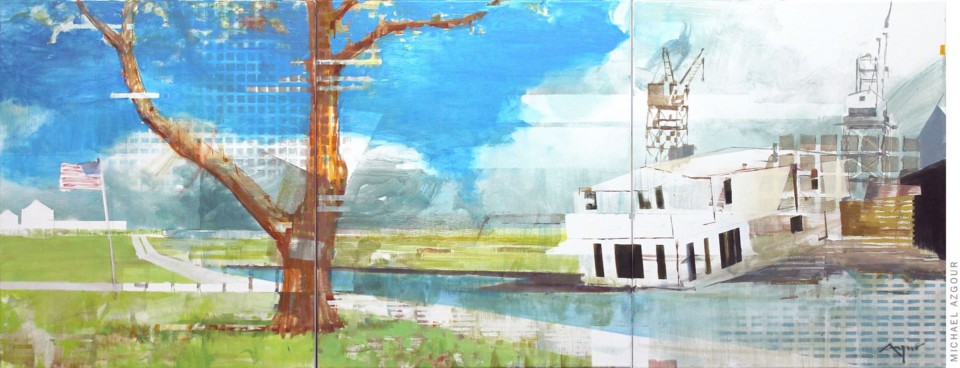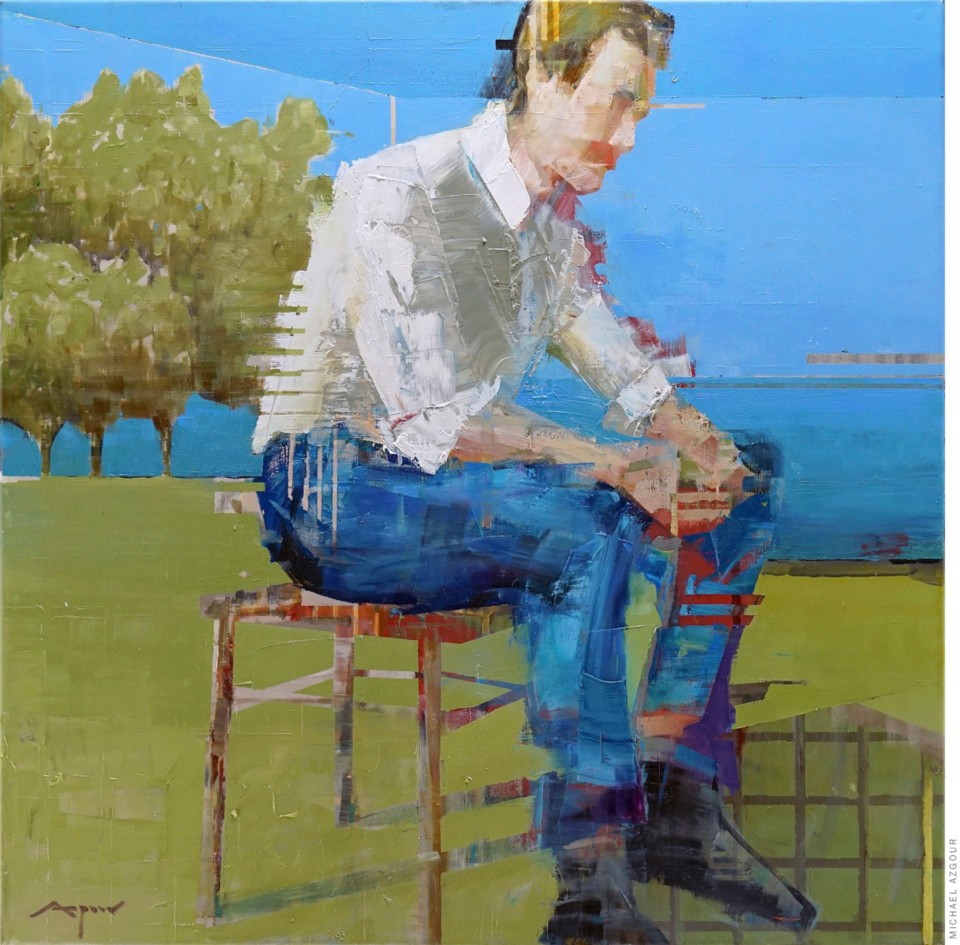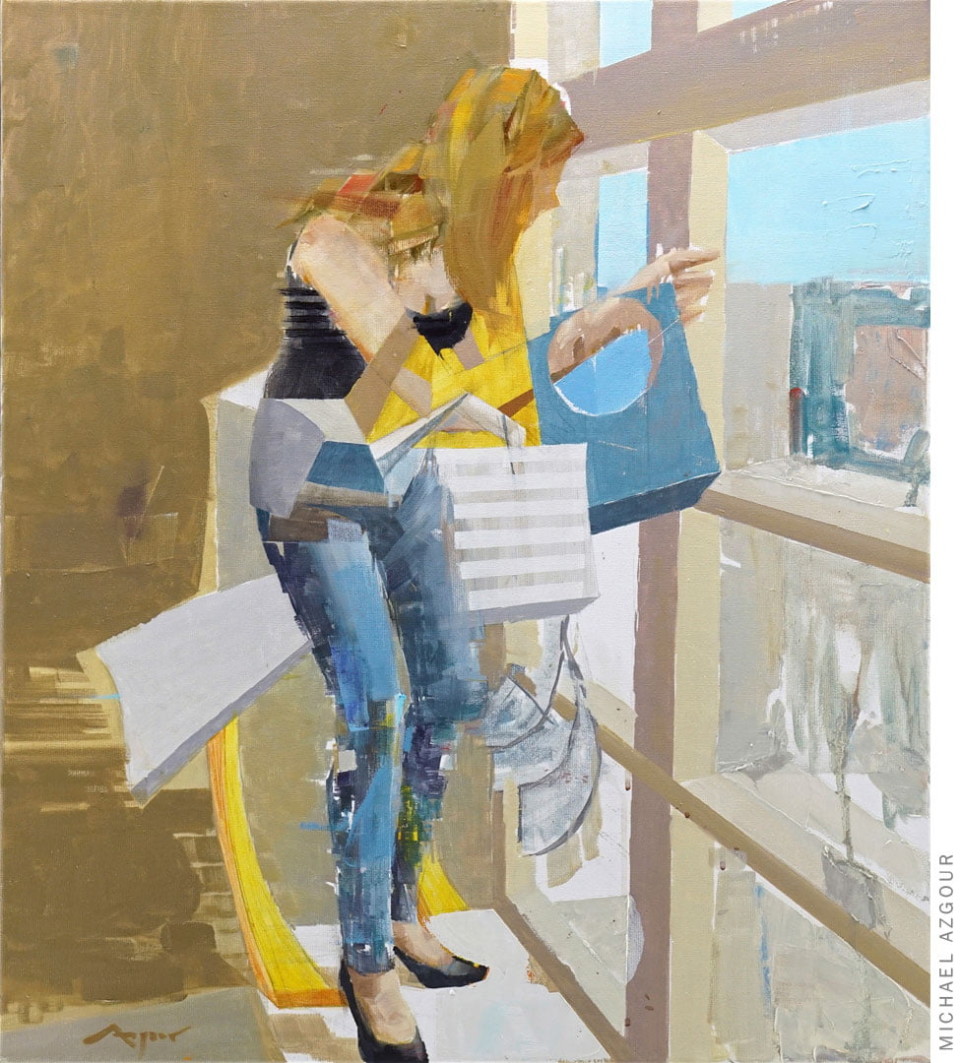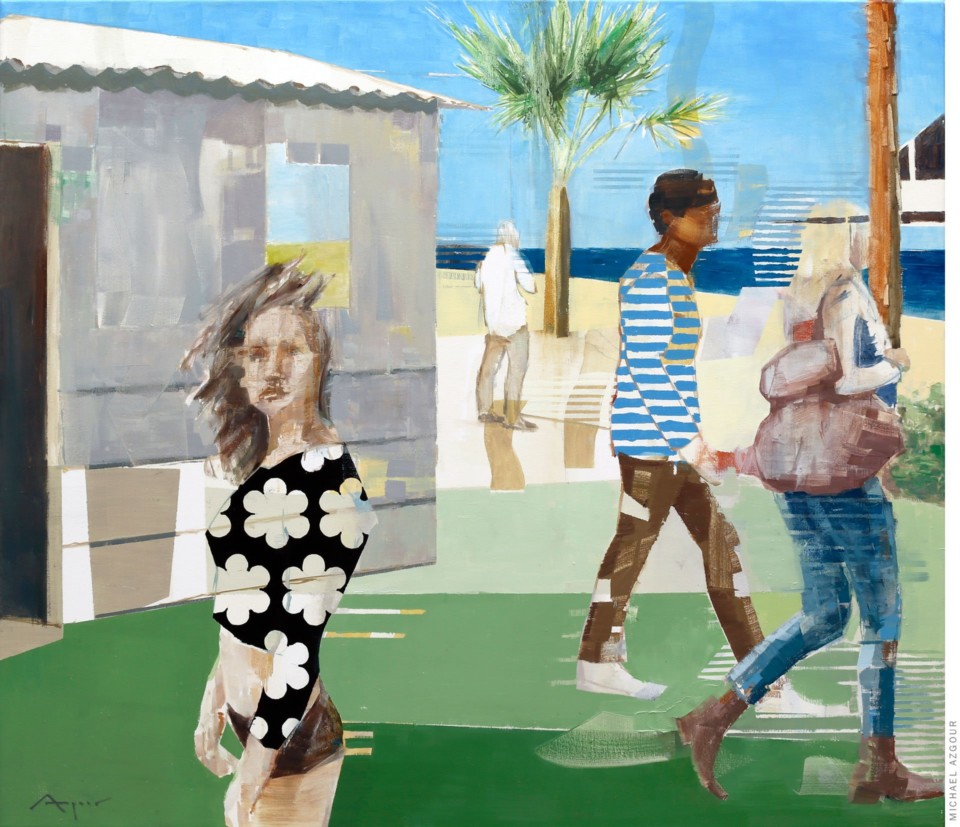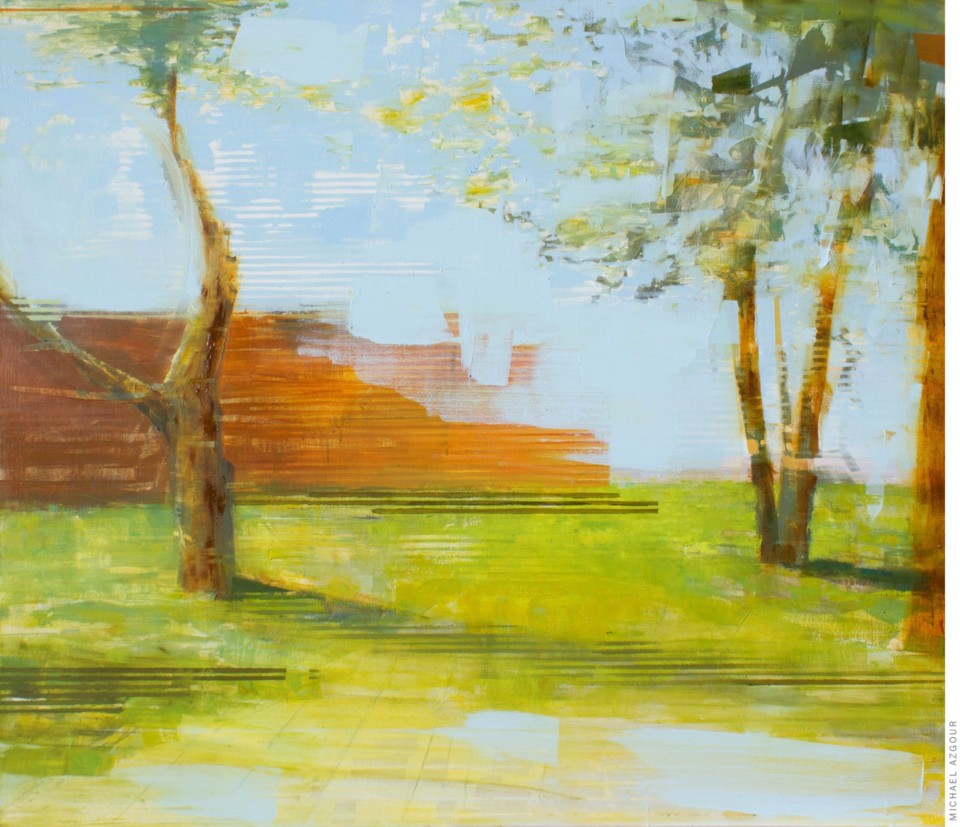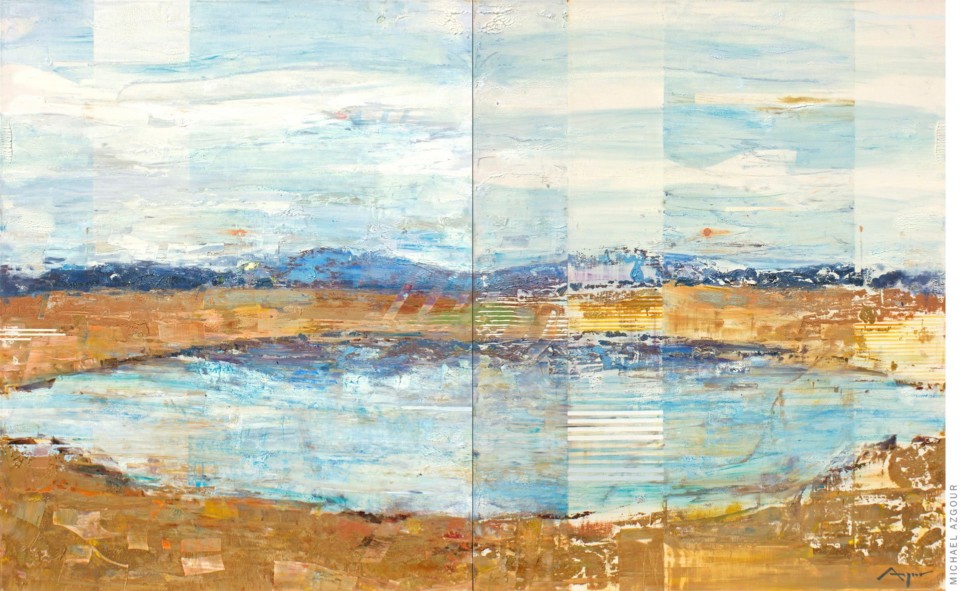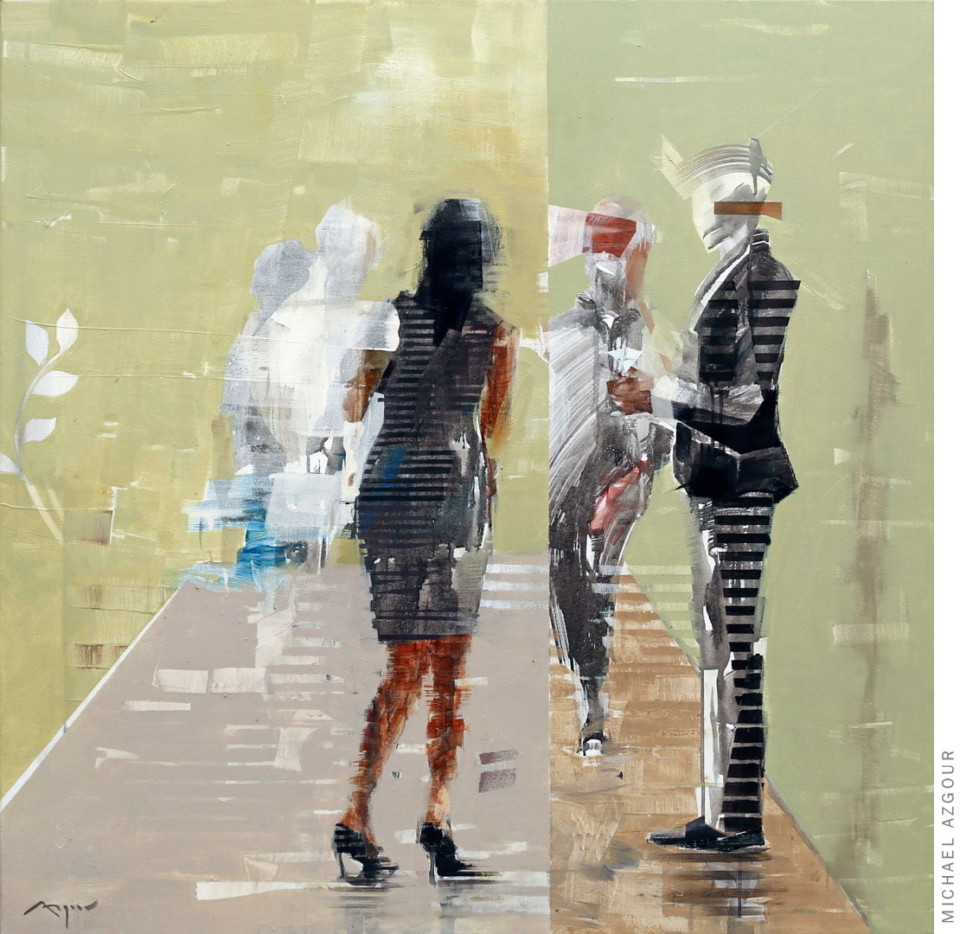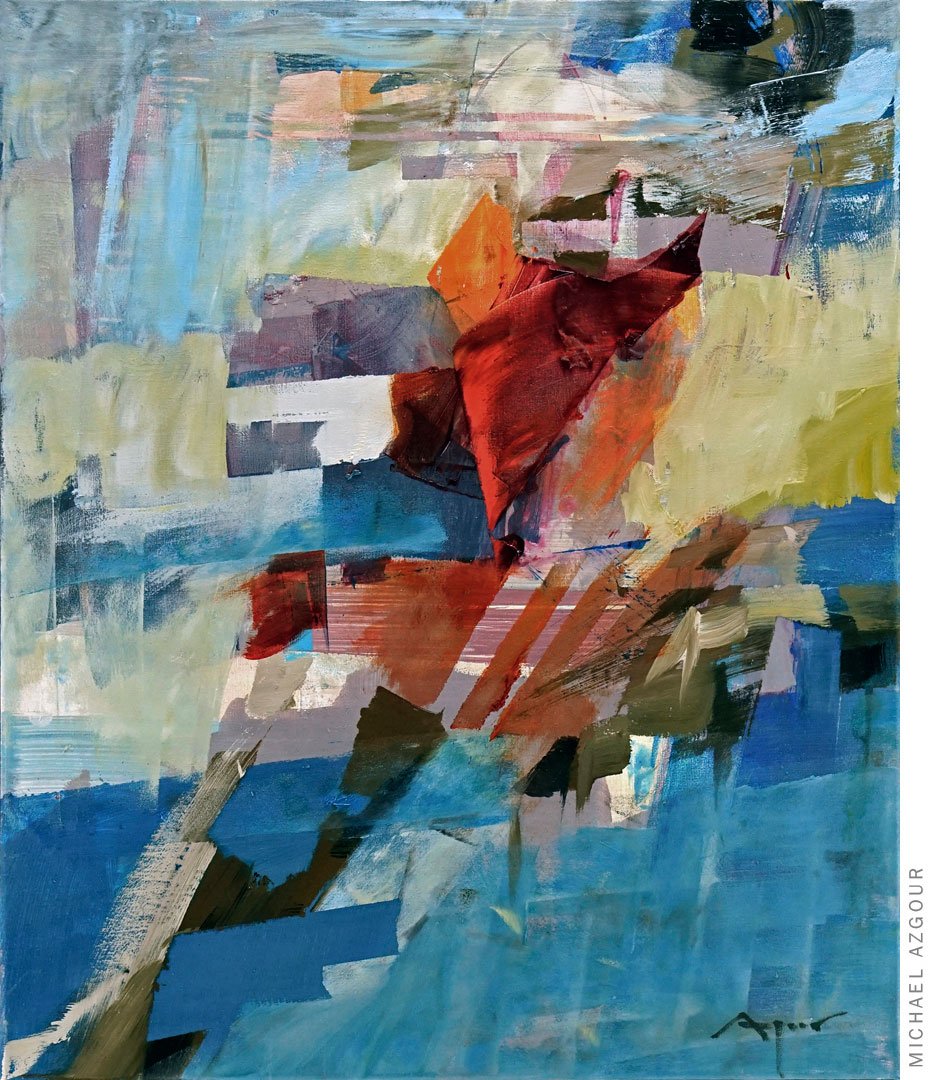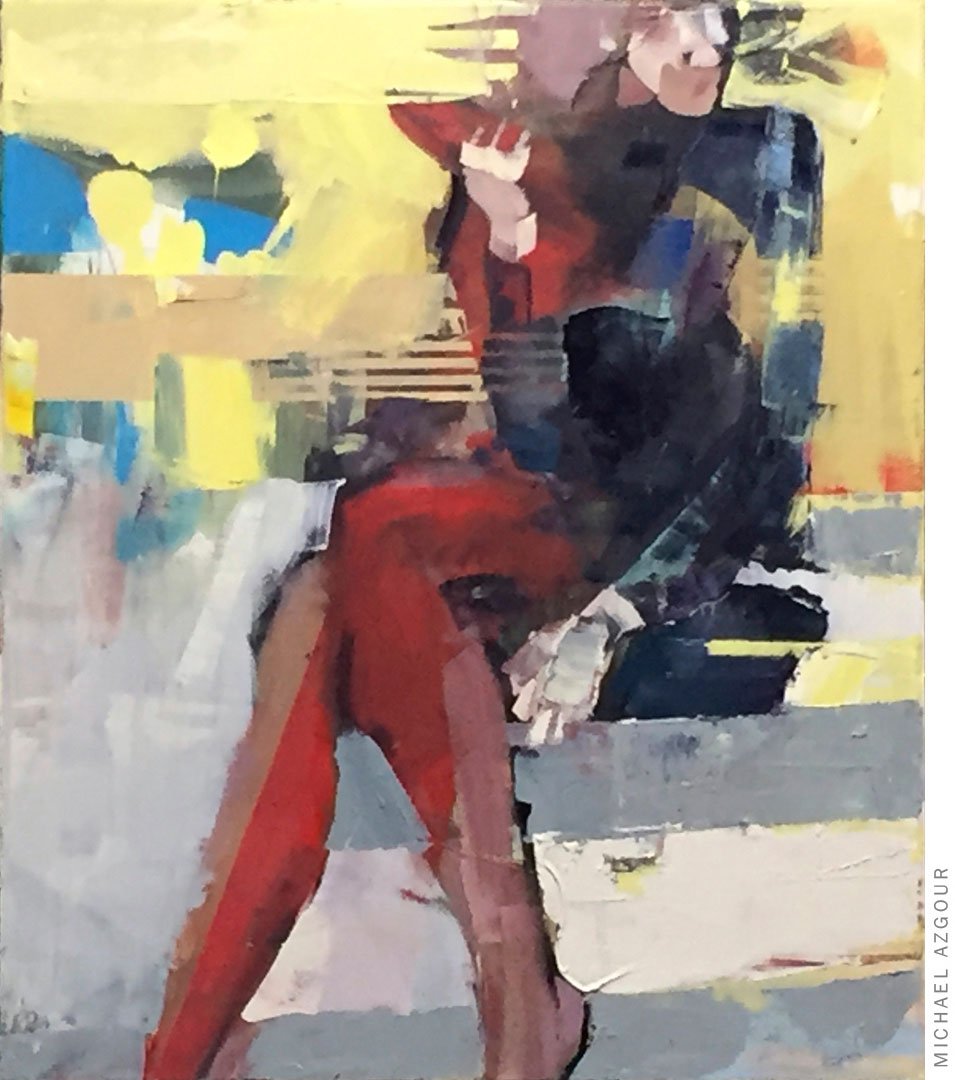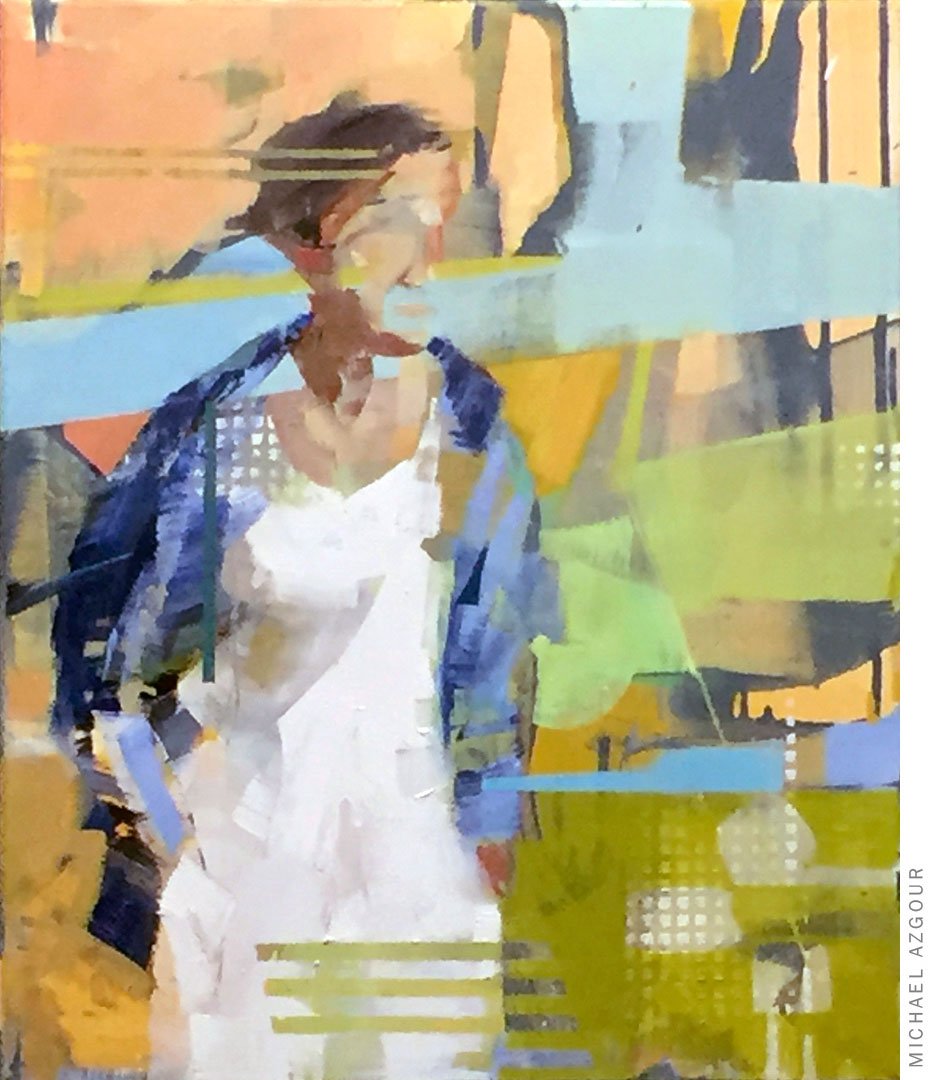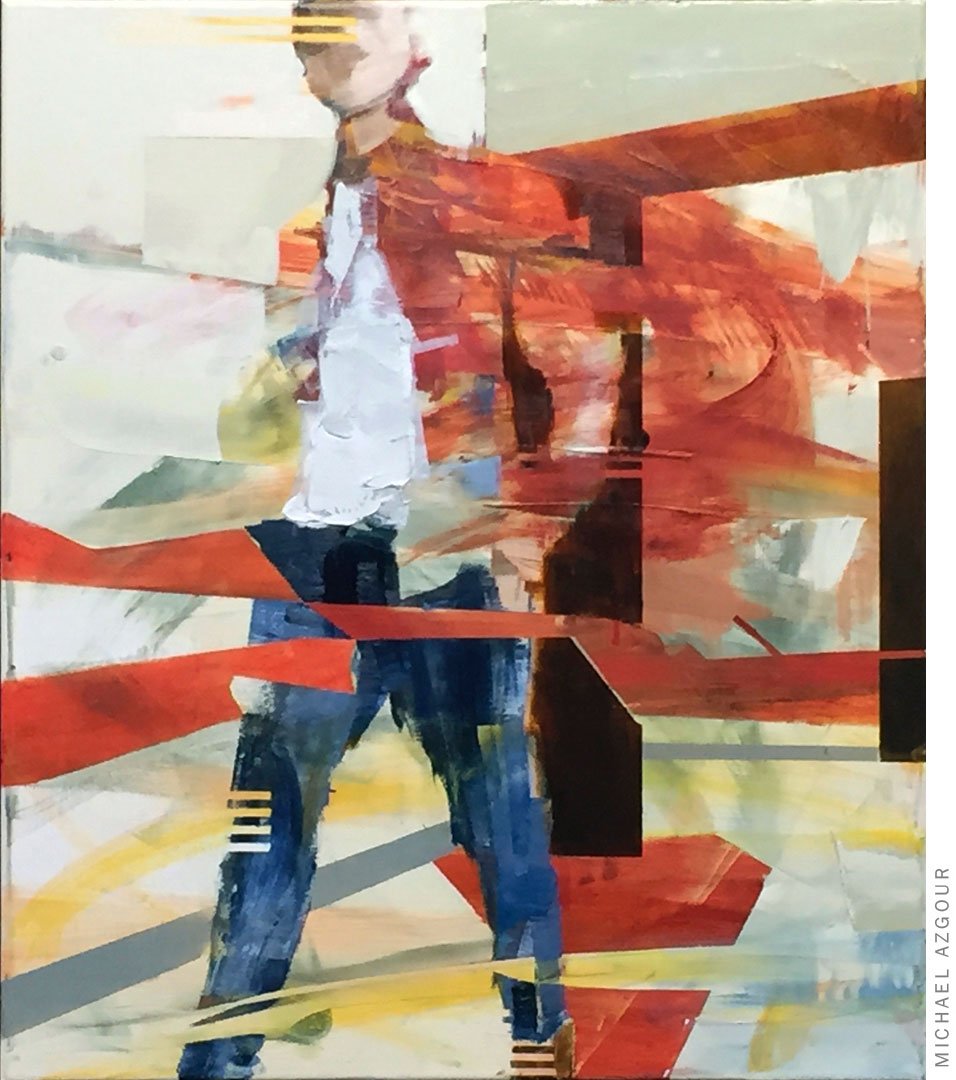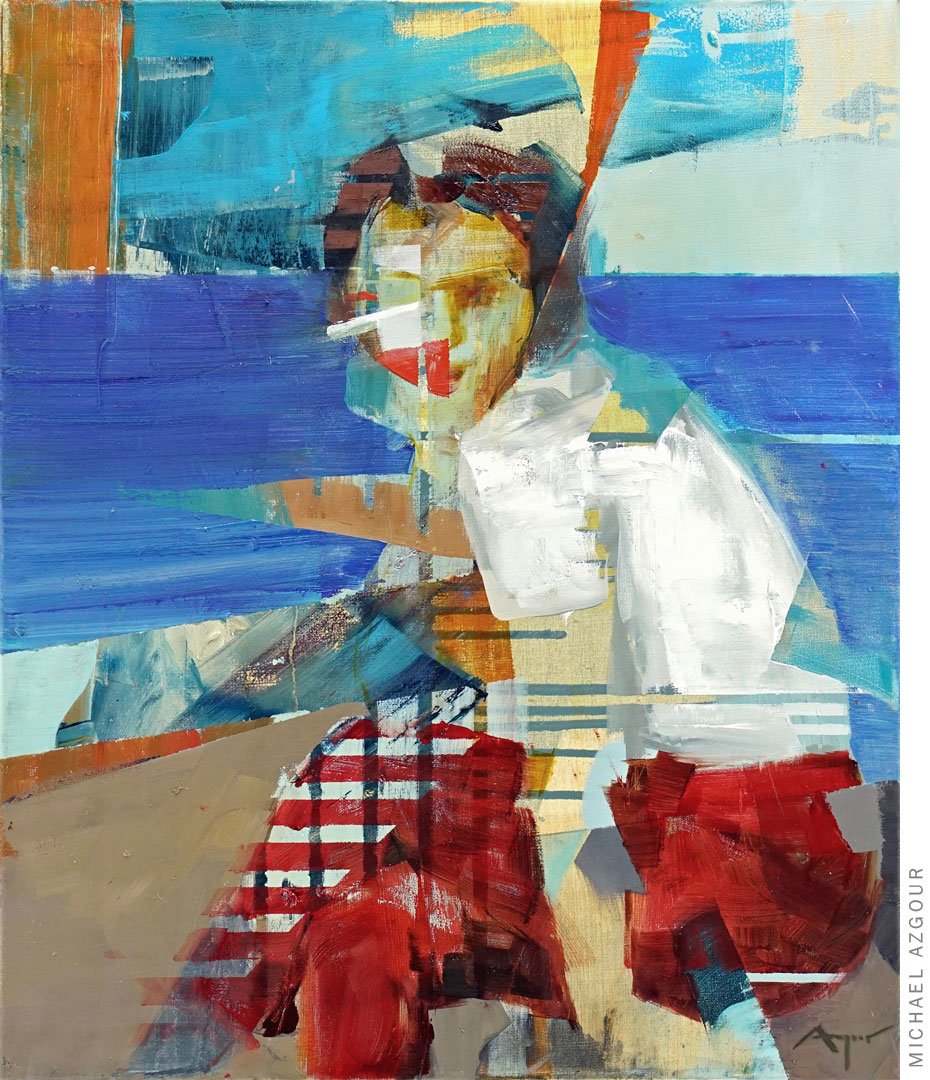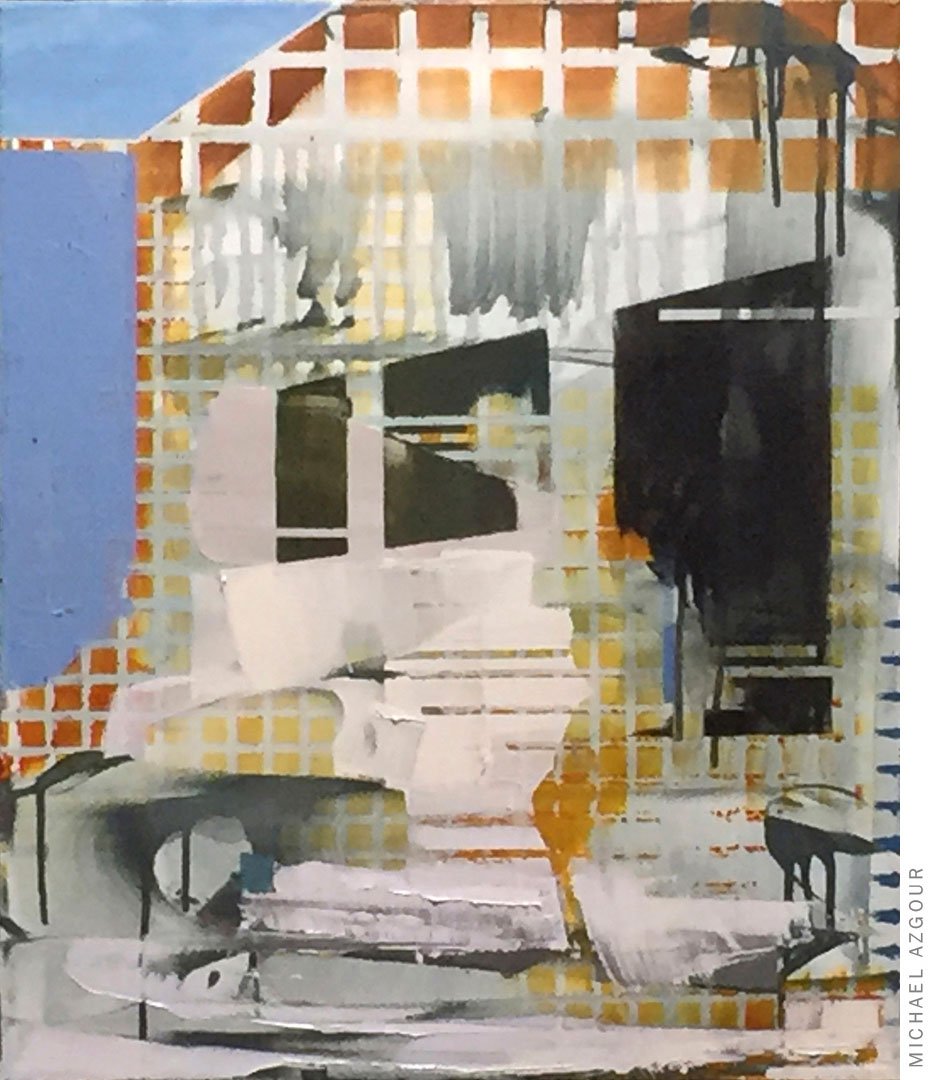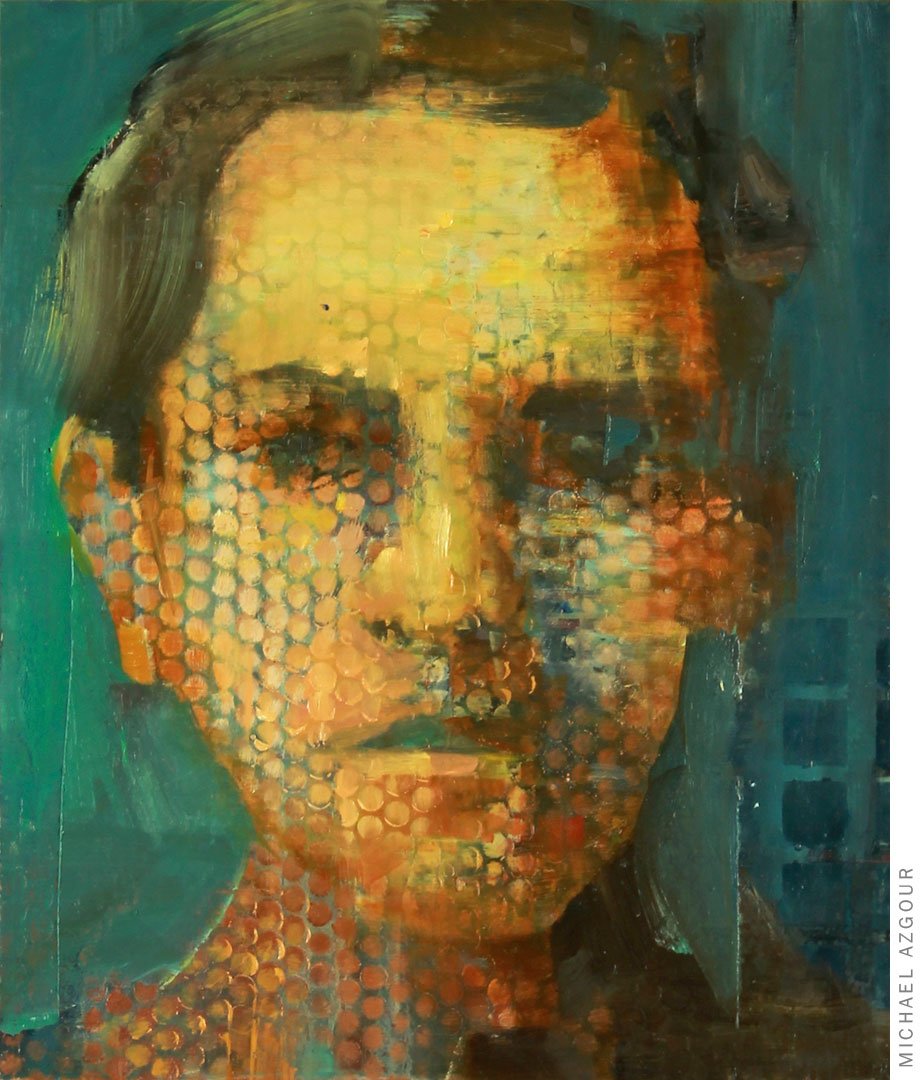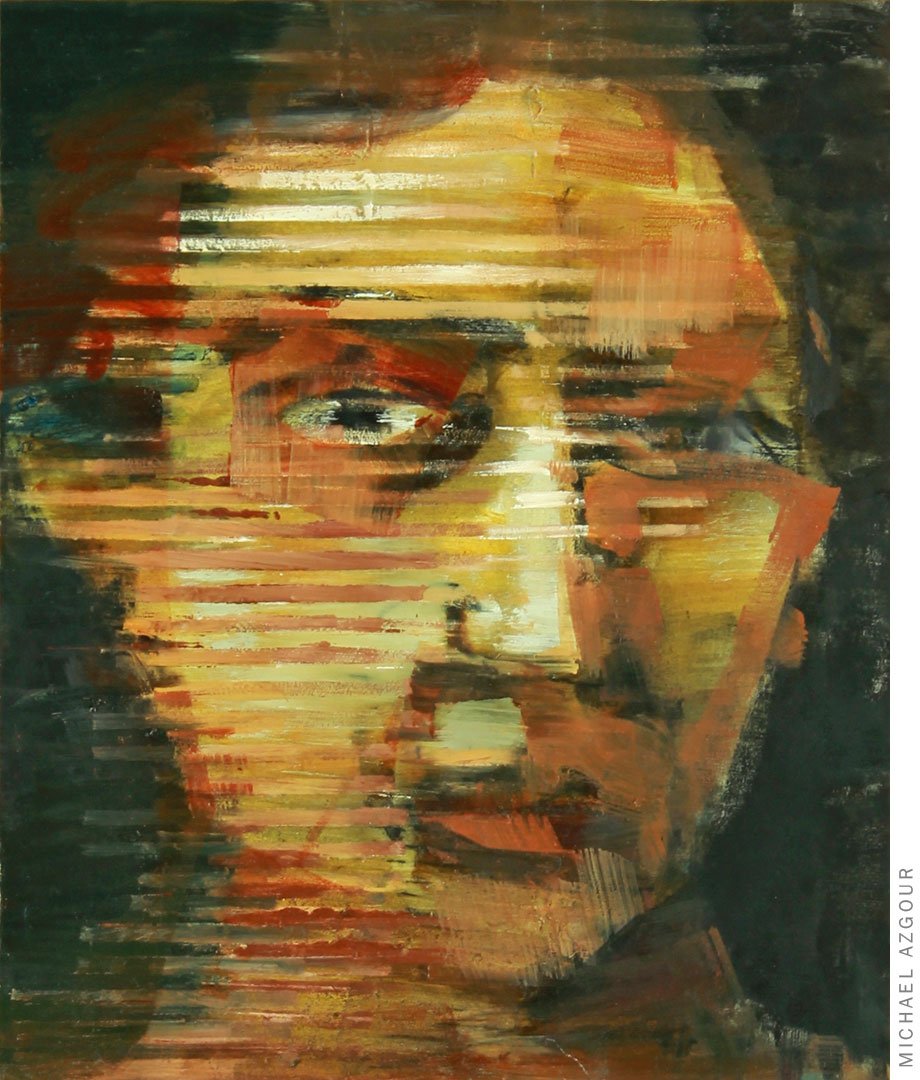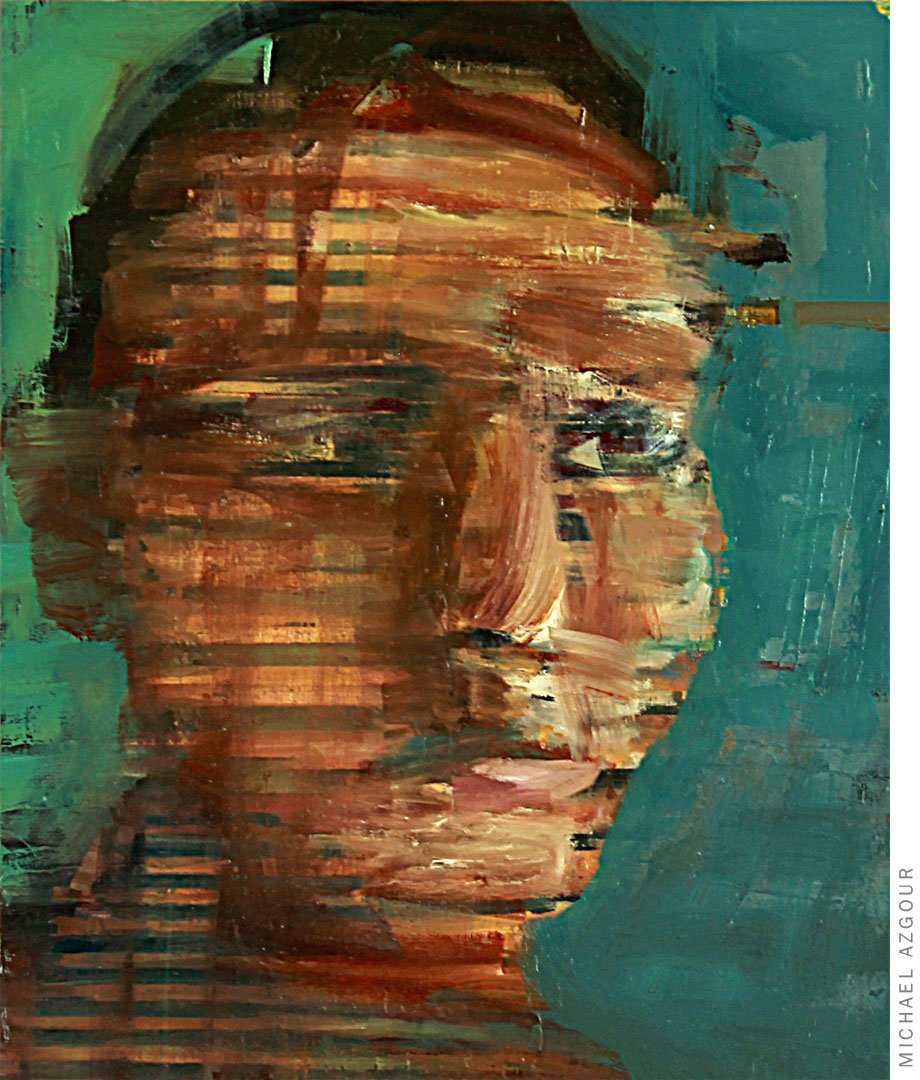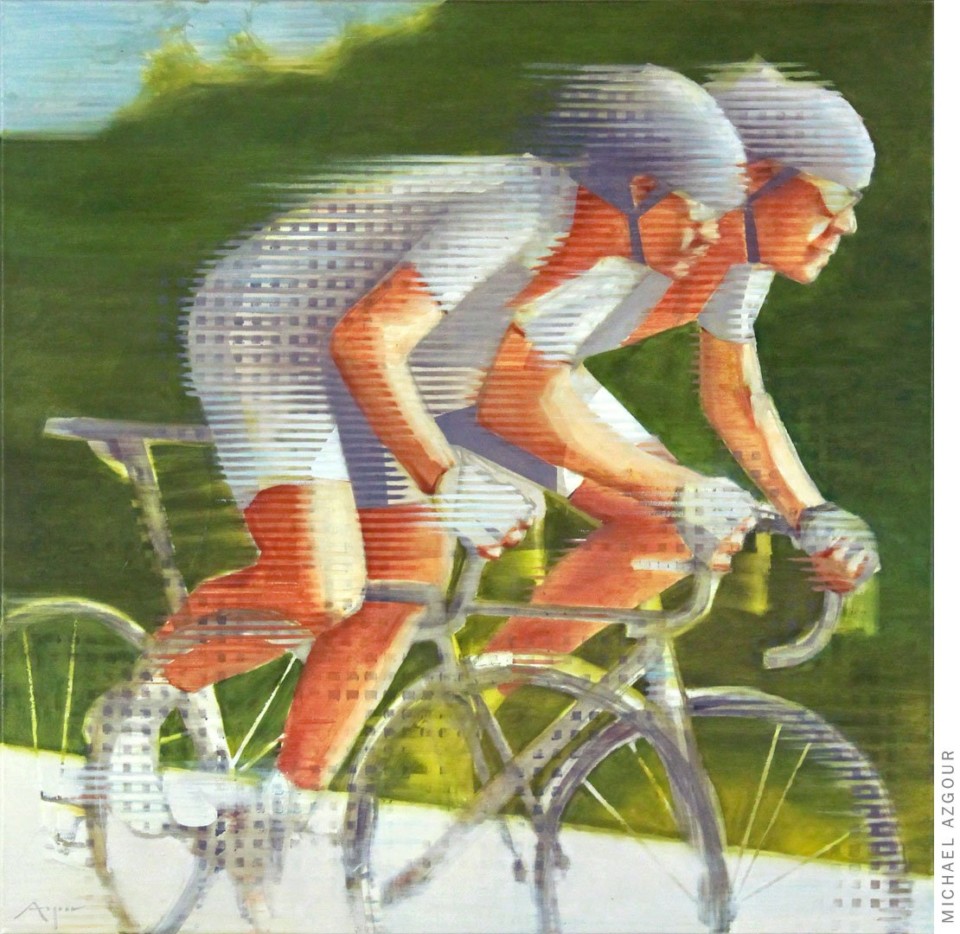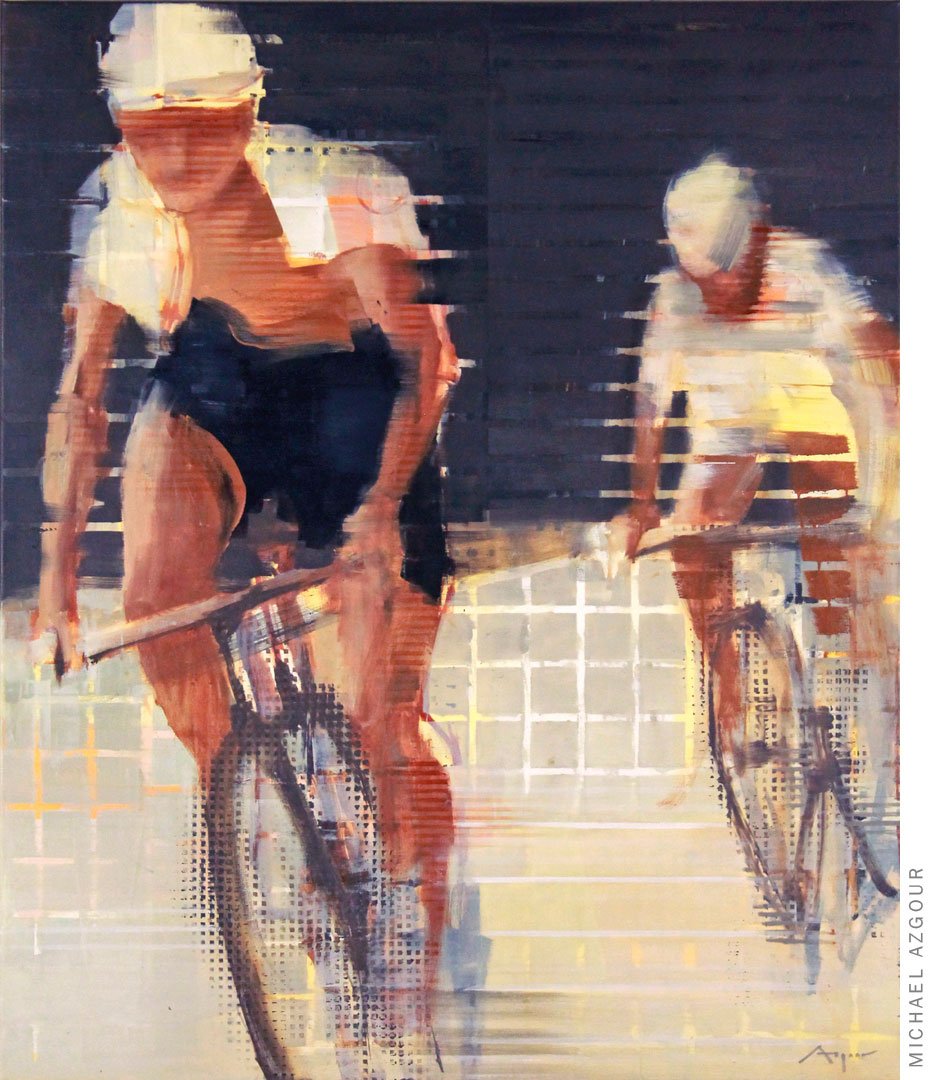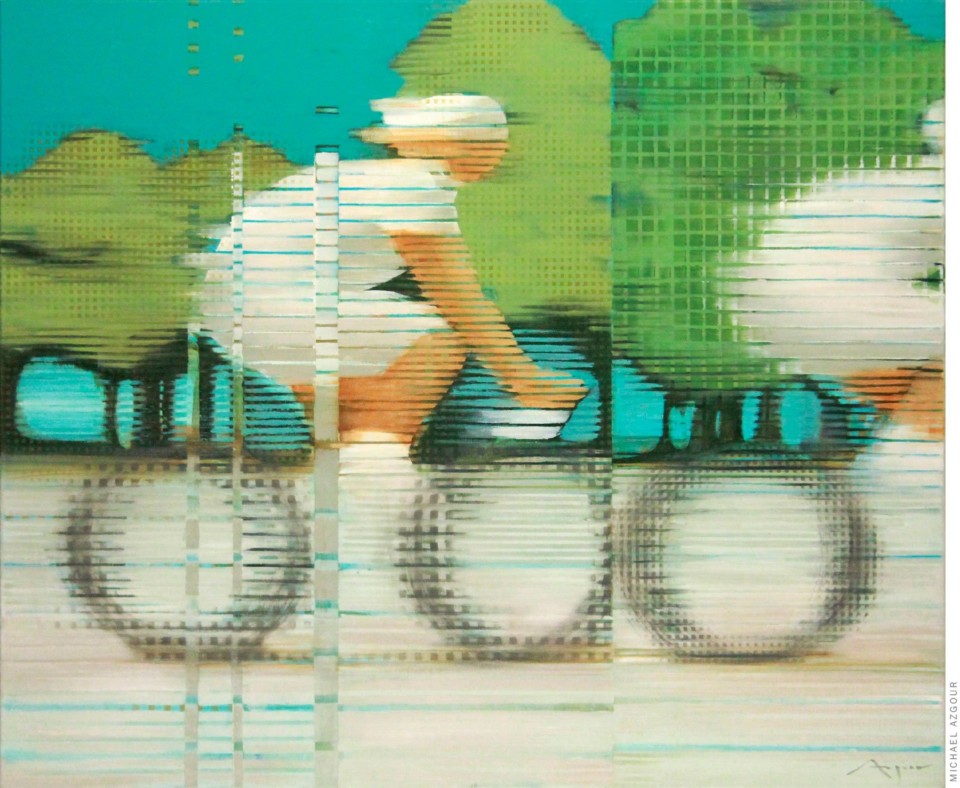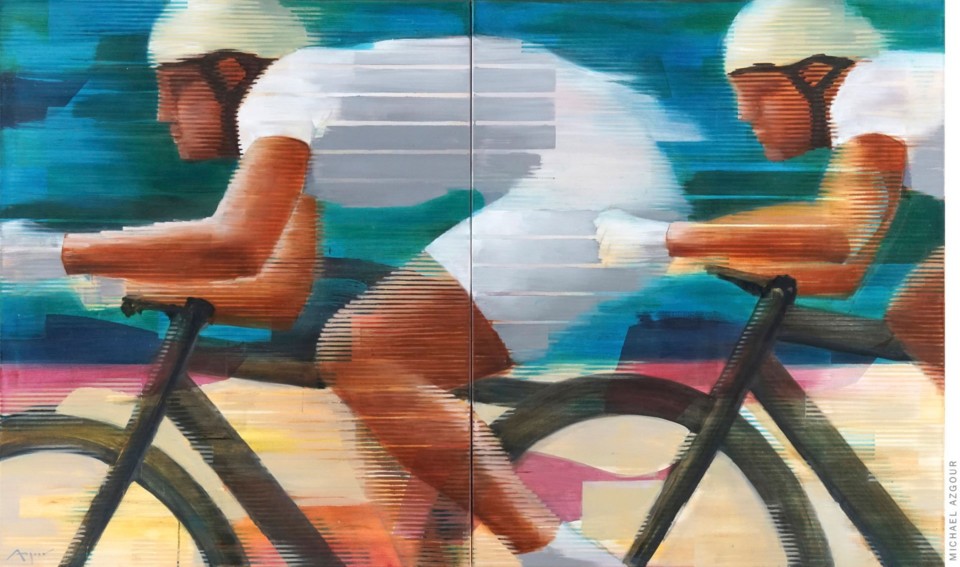On The Cusp (2018-19)
In a world where society is integrating new technology at an escalating rate, I’m interested in the psychological impact of constant adaptation, using painting to reference moments of transition, the inevitability of change, and the persistence of tradition despite pressure to adapt to evolving values. I’m also very interested in looking at time as a subjective element, identity, and the uncertainty of memories.
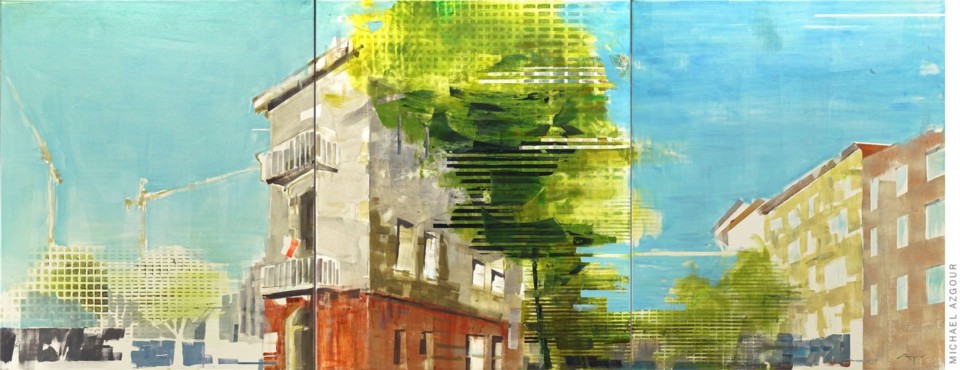
The Winter is Yours, but the Spring will be Ours
oil on linen | 39.5 x 100” (100 x 255 cm), triptych
Modern Artifact (2015)
This series speaks about how we interact with images today by referencing features found in the disconnected snapshots and video clips that surround our lives. I reference the pixilation, motion blur, repetition, distortion, and ambiguity inherent in the images we come across daily by using the medium of paint on canvas. I’m very interested in the power of photography to capture the psychological state of an individual and the way visual cues can suggest a sense of place and mood. By combining realistic painting techniques with distortions in space, surface and style, I’m questioning the viewer’s perception of the basic components of representation.
Velocity (2016-17)
In this series, I refer to moments on the verge of change in which singular moments—such as those captured by a photograph—embody a larger span of time and meaning. My process of composing works and layering paint while retaining the history calls attention to the divergent paths painting and photography have taken in the past century and allows the viewer to access the process. By visualizing the formation of the piece and providing one’s own meaning, the viewer’s engagement is an essential part of each painting and their interaction brings the work to completion.
Studies (2017)
In these works, subjects, while representational, are partially broken down into horizontal lines, geometric shapes, and pixelated abstraction. I like to let the viewer think about the balance between the real and unreal. Much of what I’m painting has to do with ephemerality, movement, and memory.
Demigod (2014)
These oil on paper works are abstracted portraits based on combined imagery—both photographs and paintings—found on the internet. The act of combining imagery and forming something new is intriguing because, much like the development of memory over time, it involves replacing the original image with a new one.
Racers (2014)
Inspired by the Tour de France, this series focuses on the subject of bicycle racers, reference the medium of video, and address the concept of movement.
